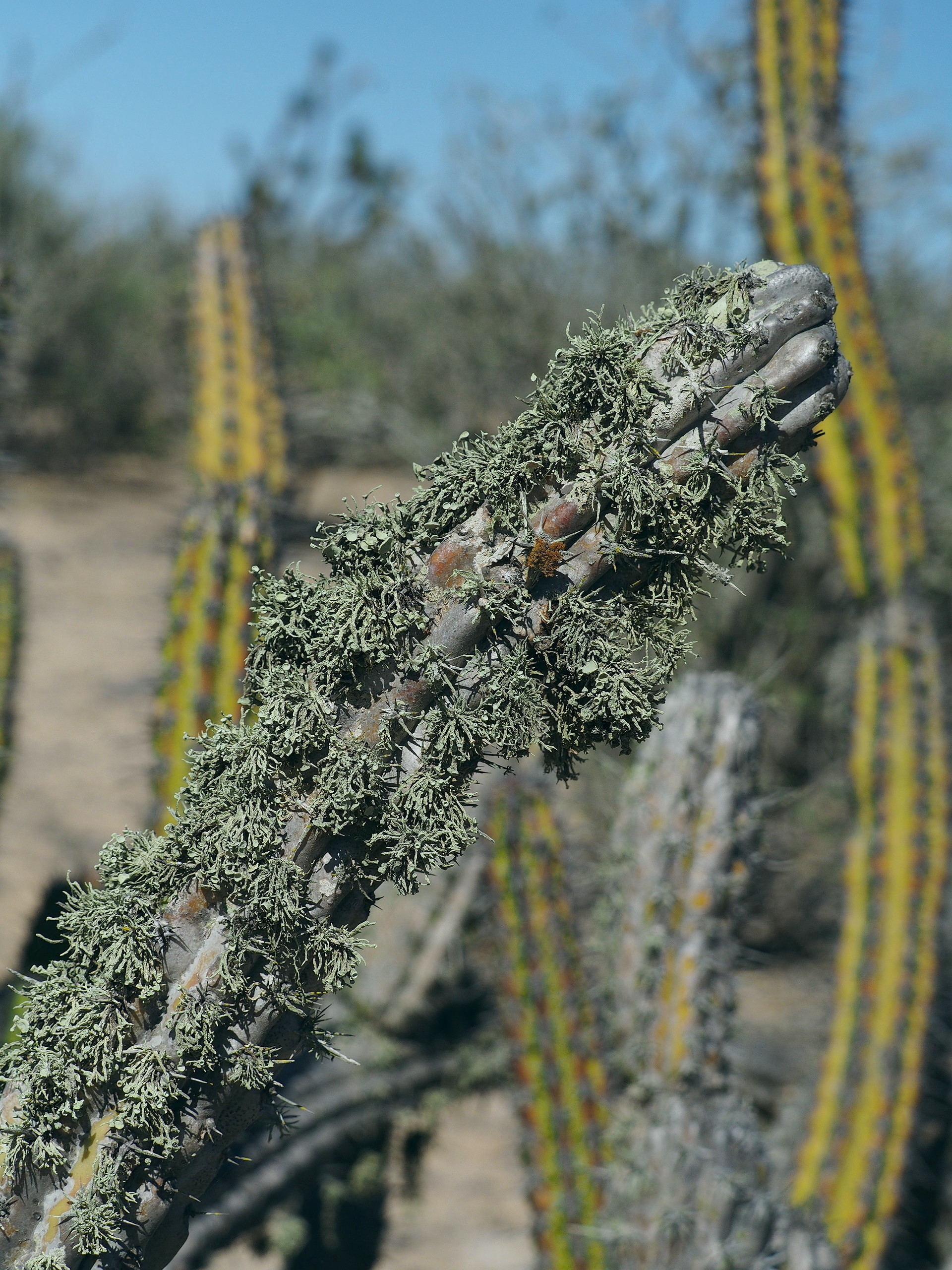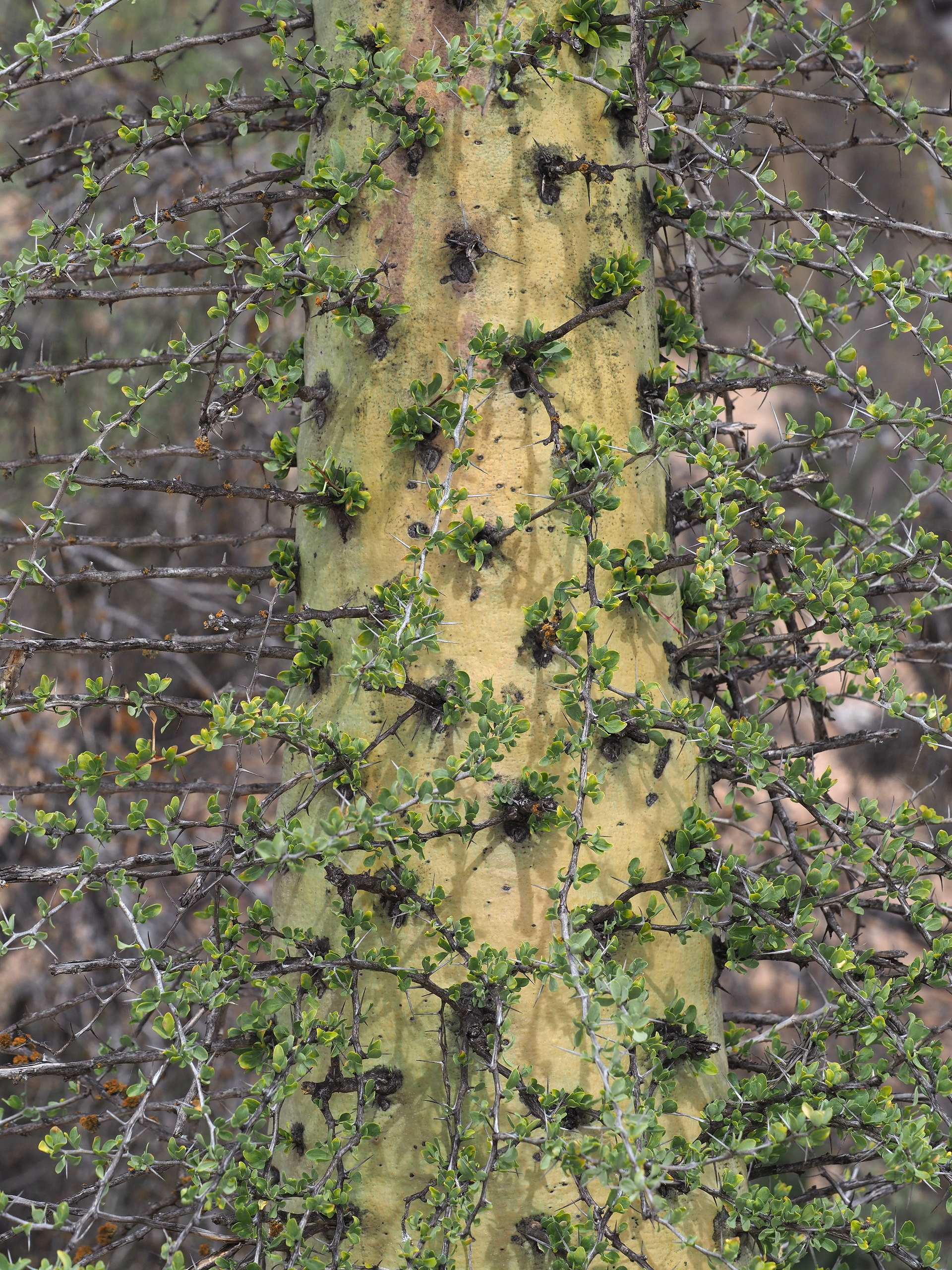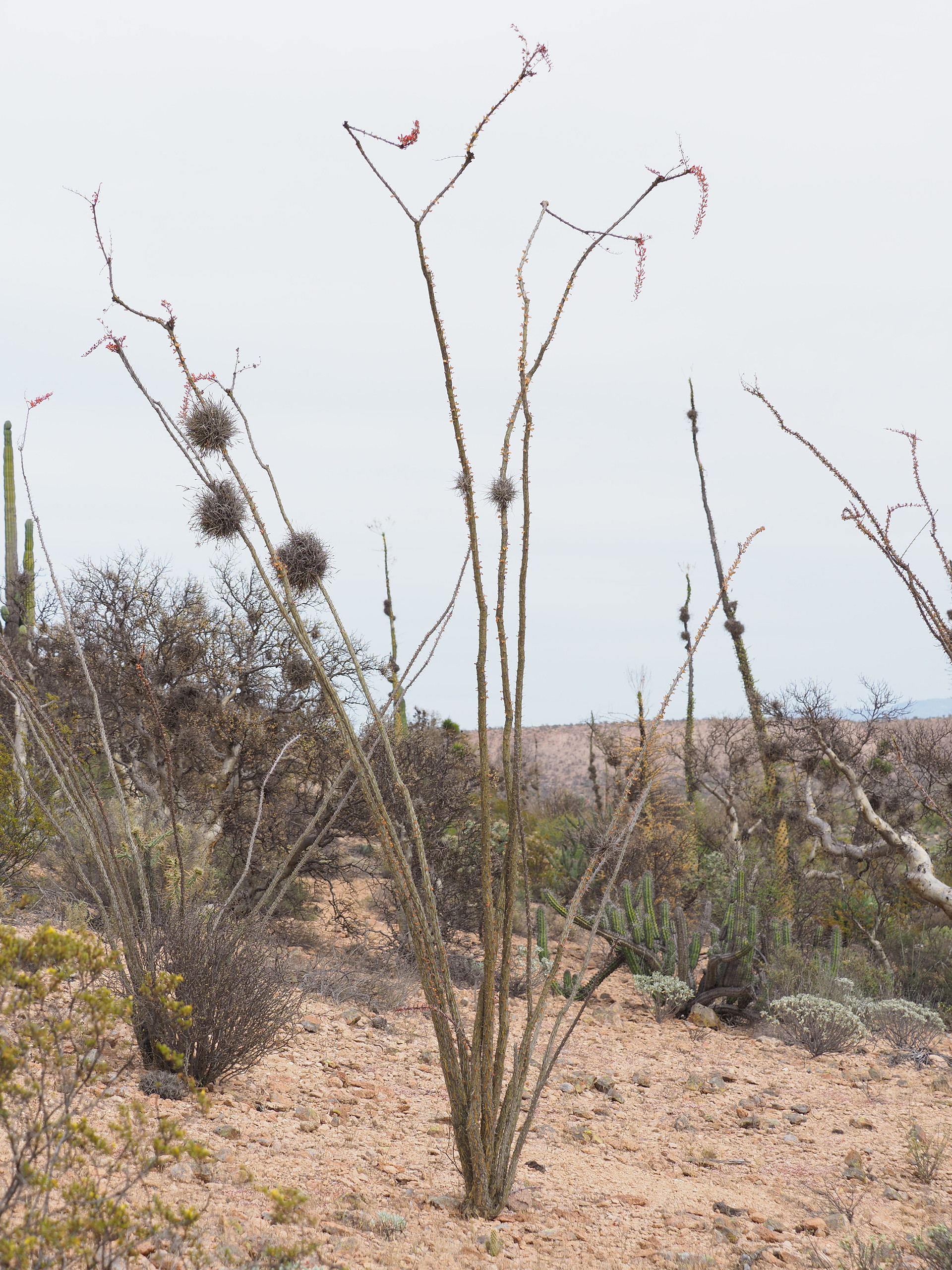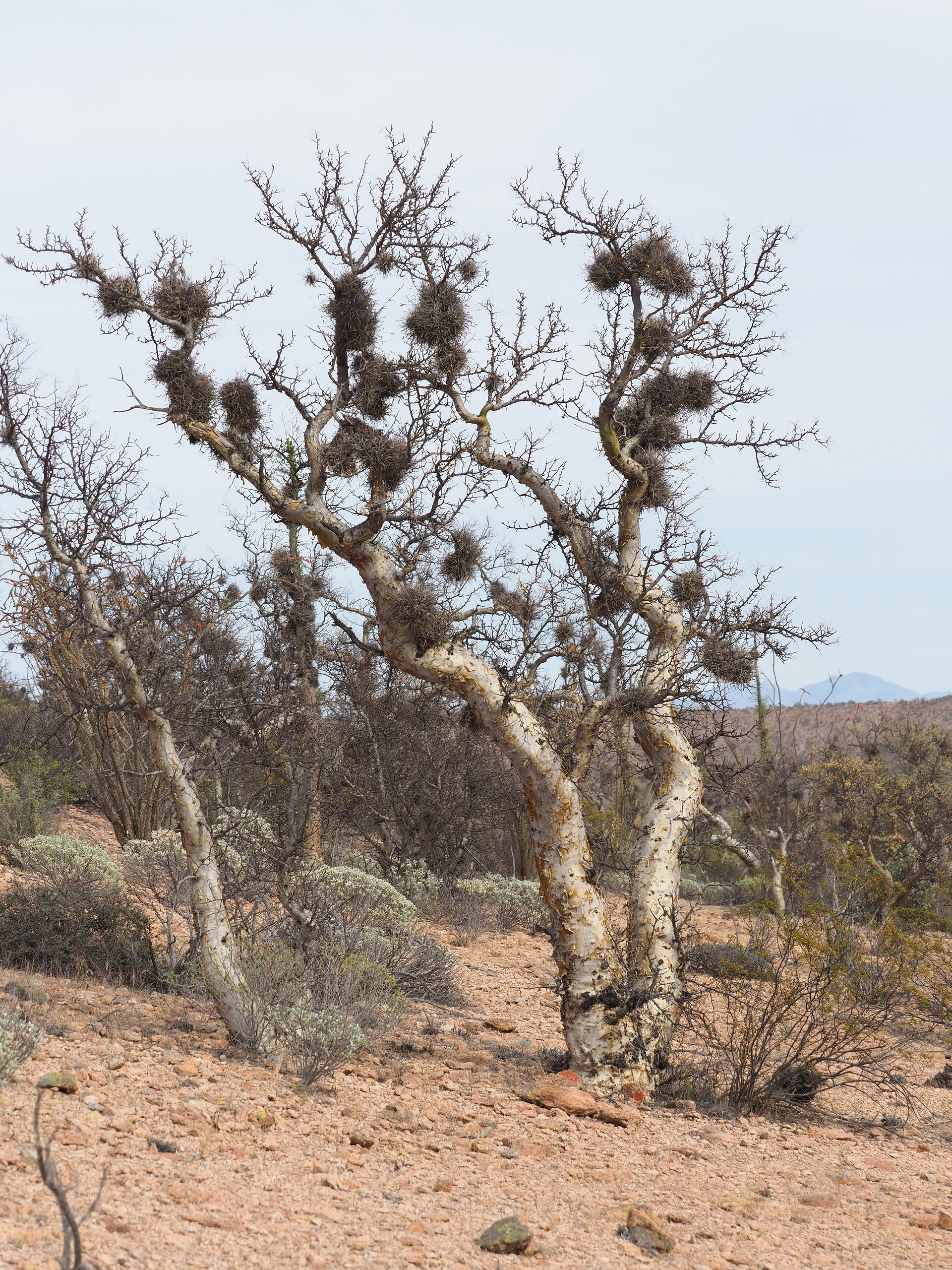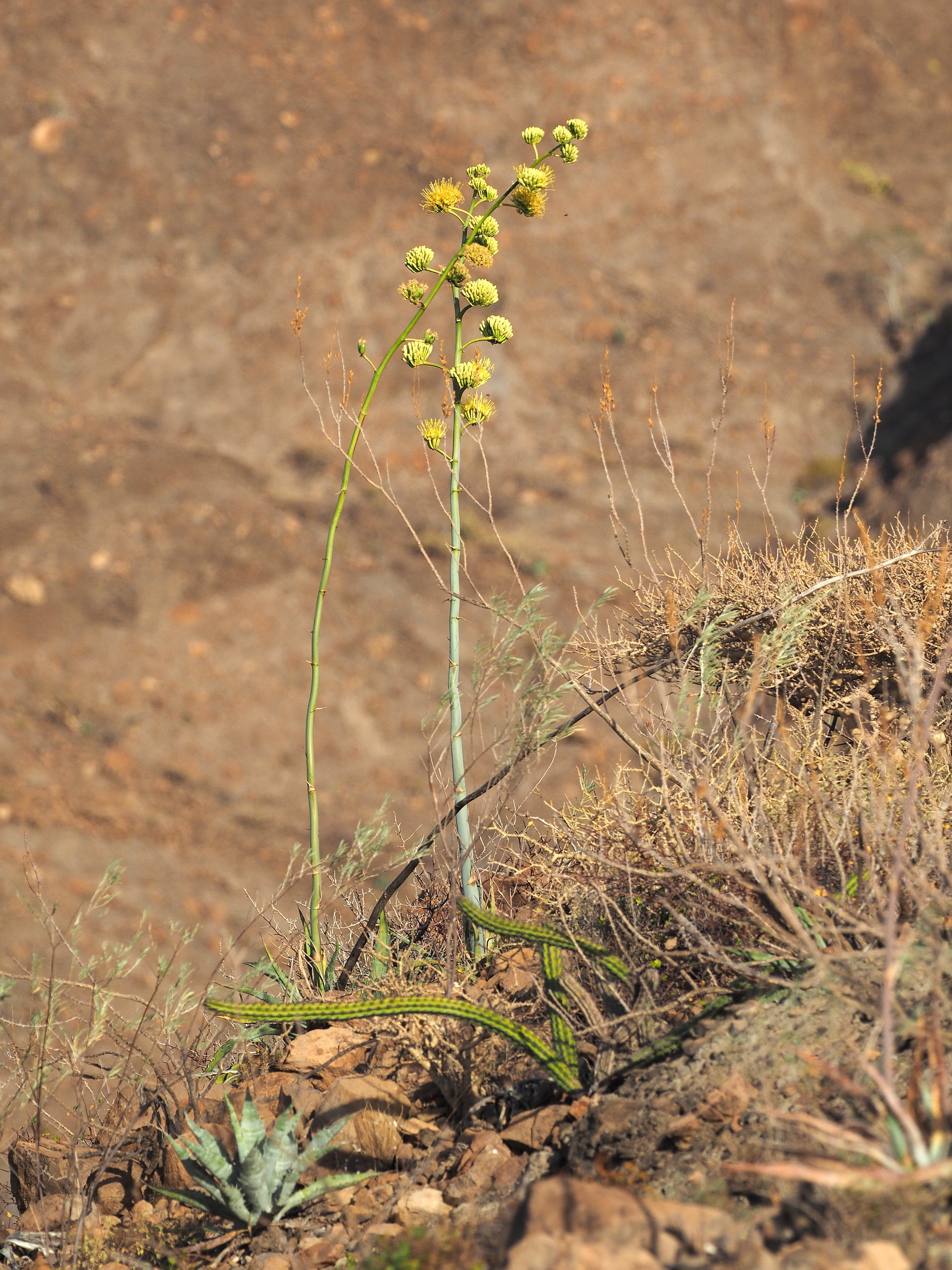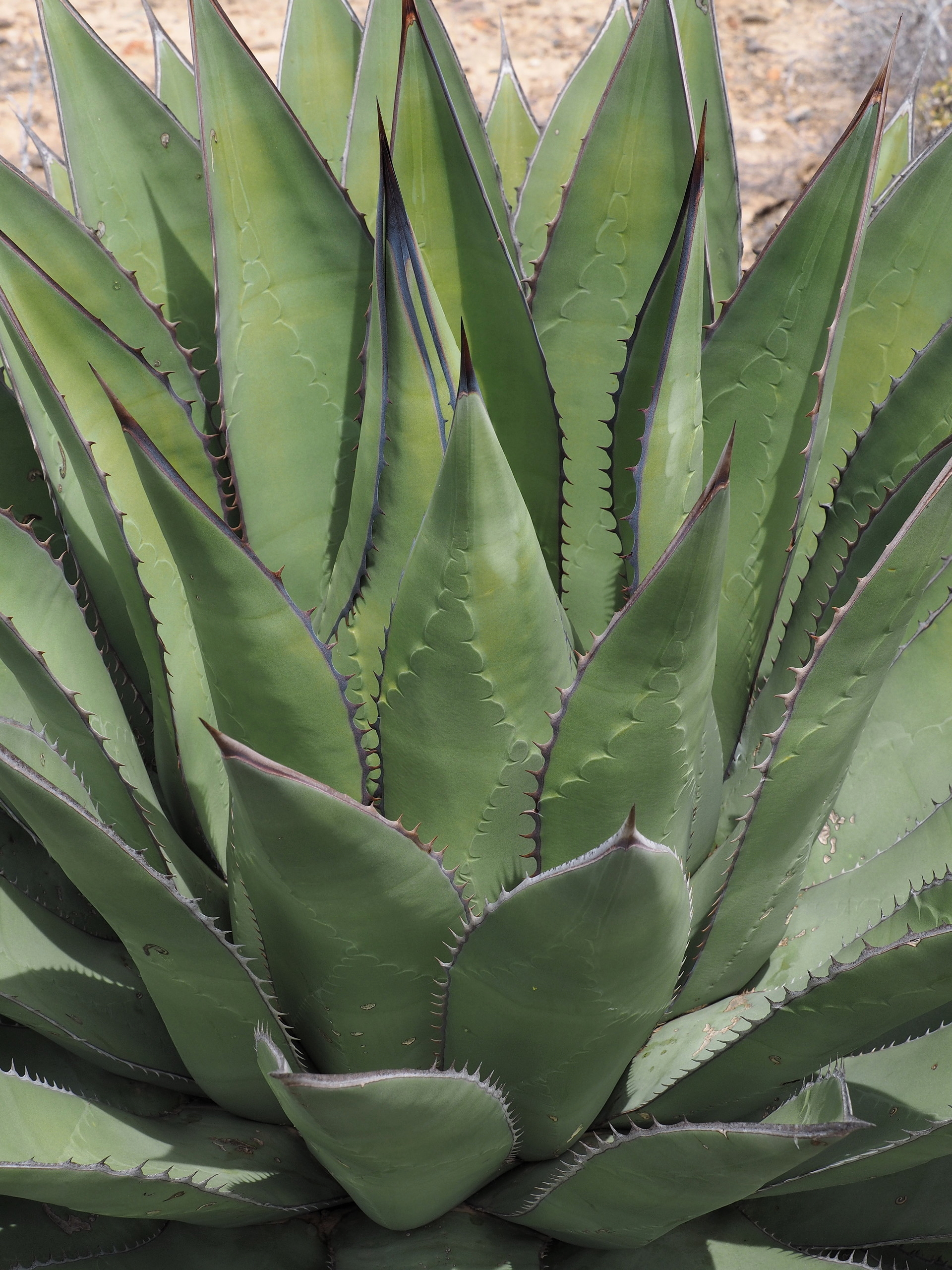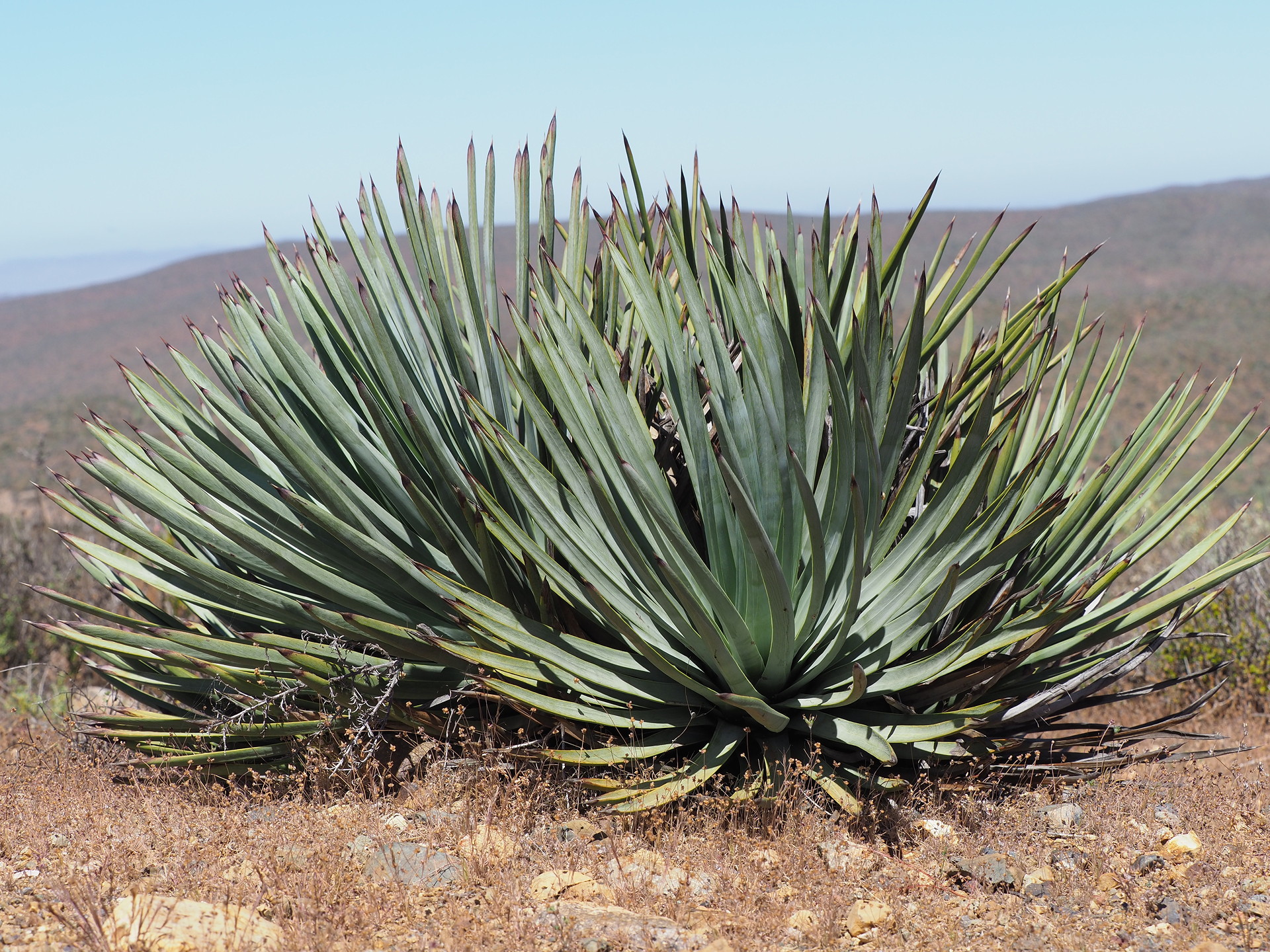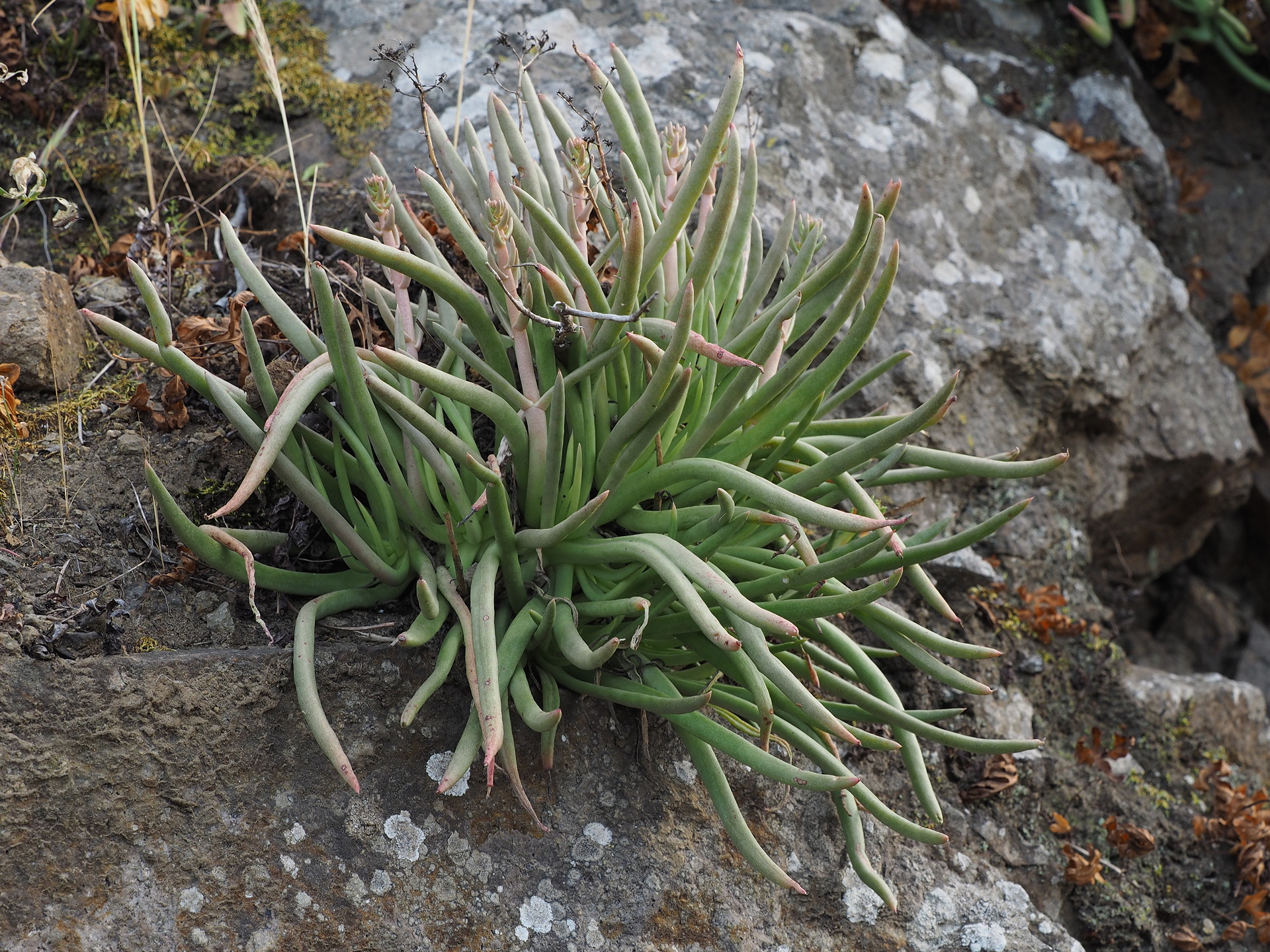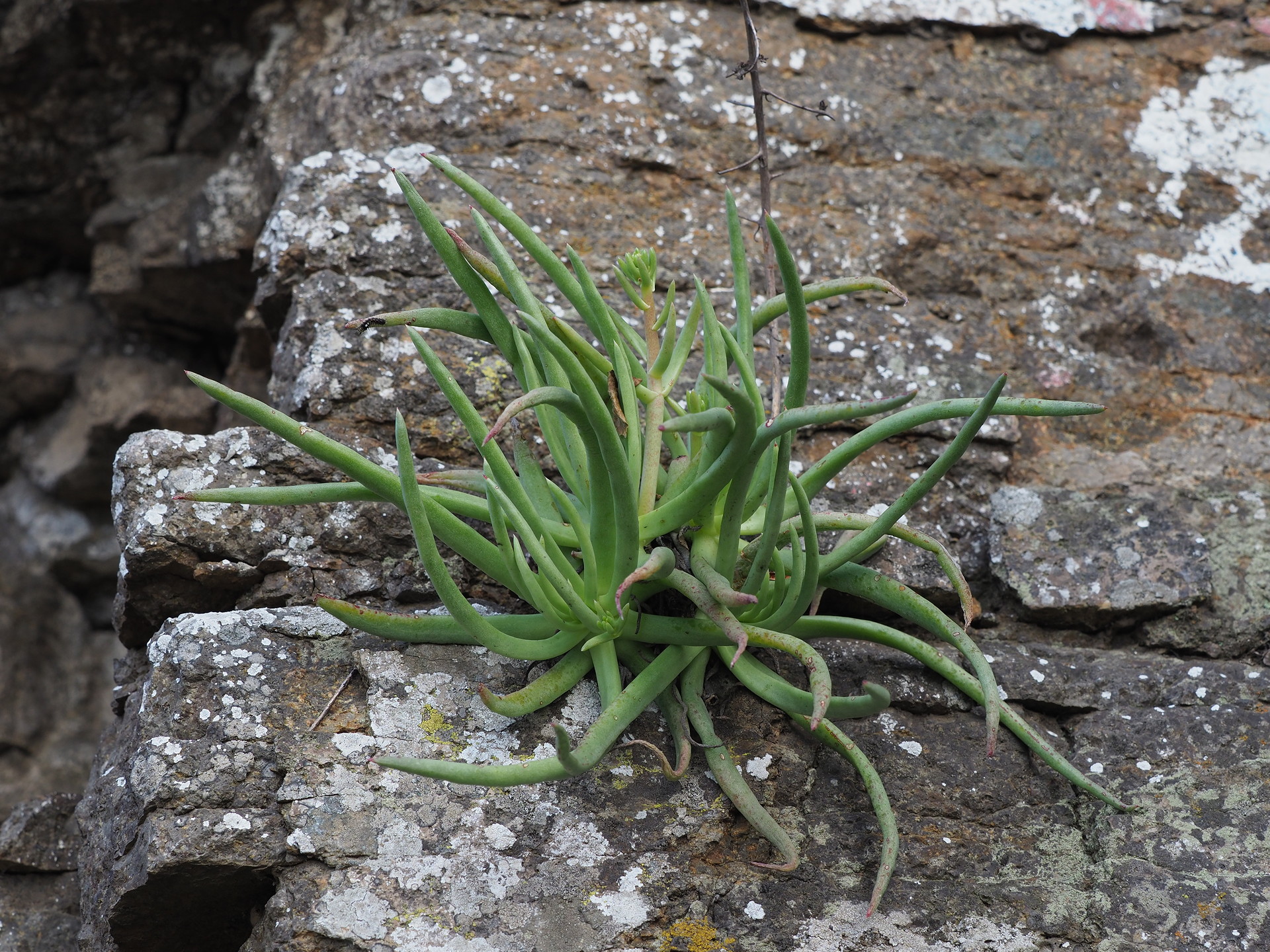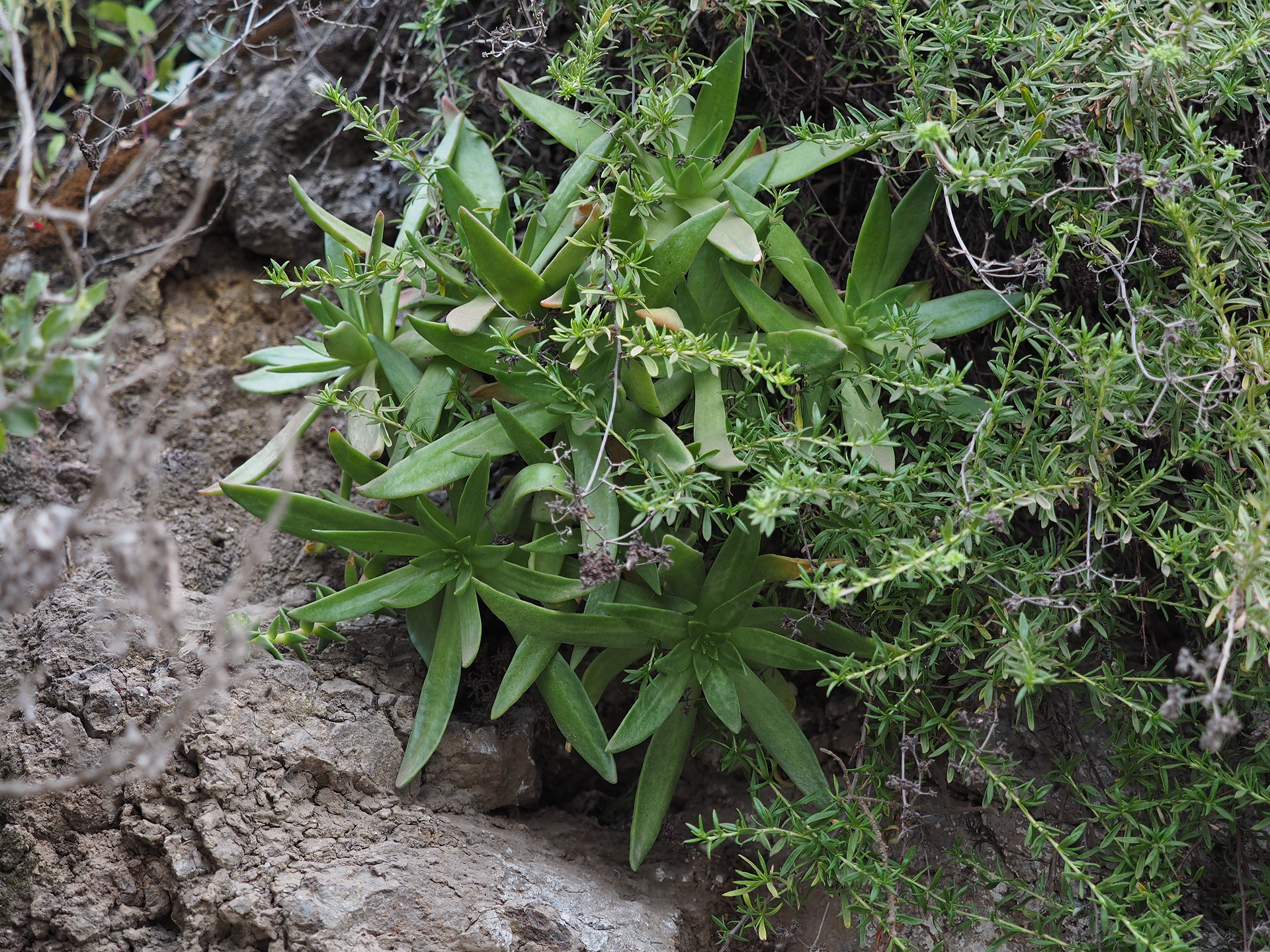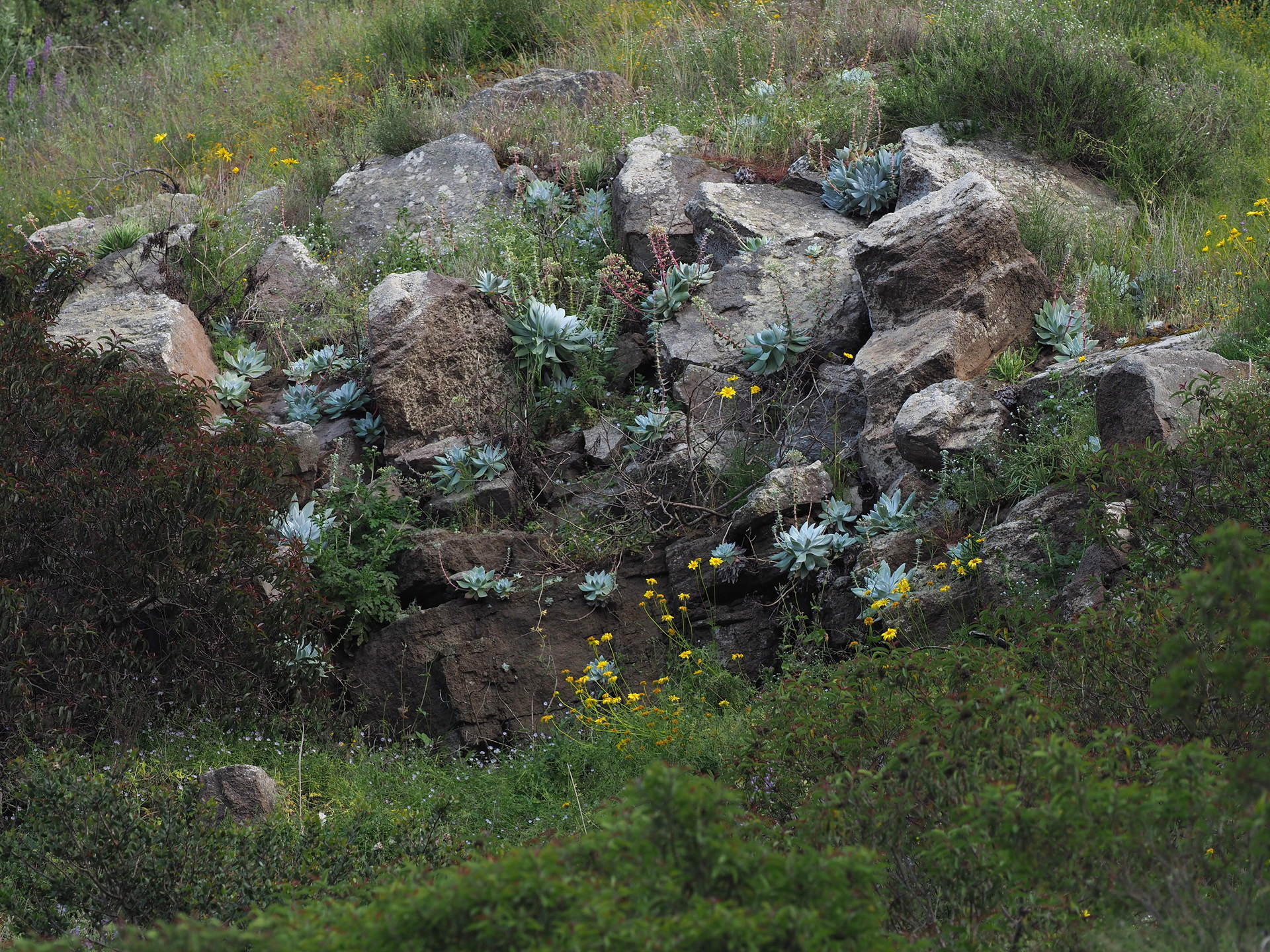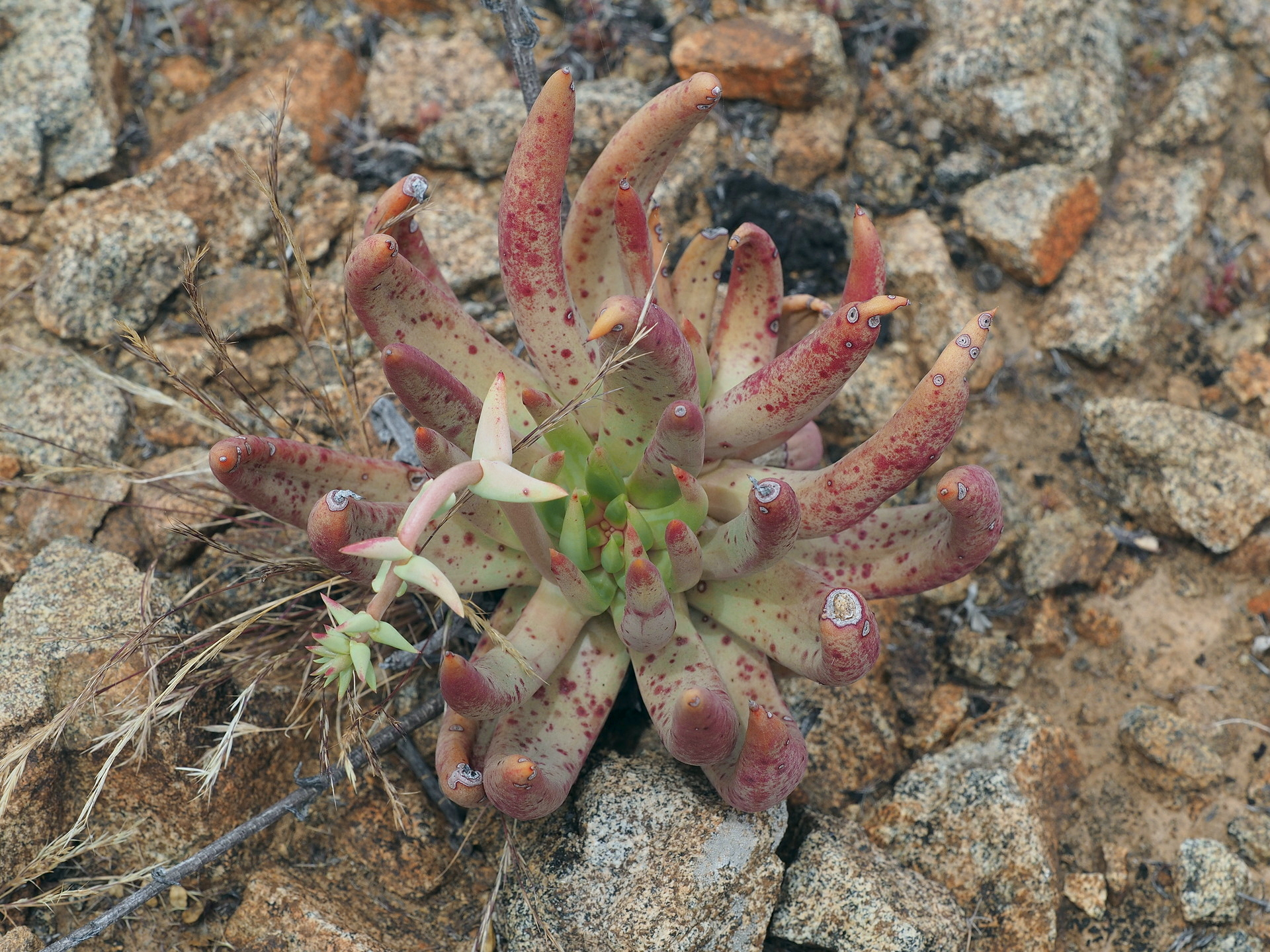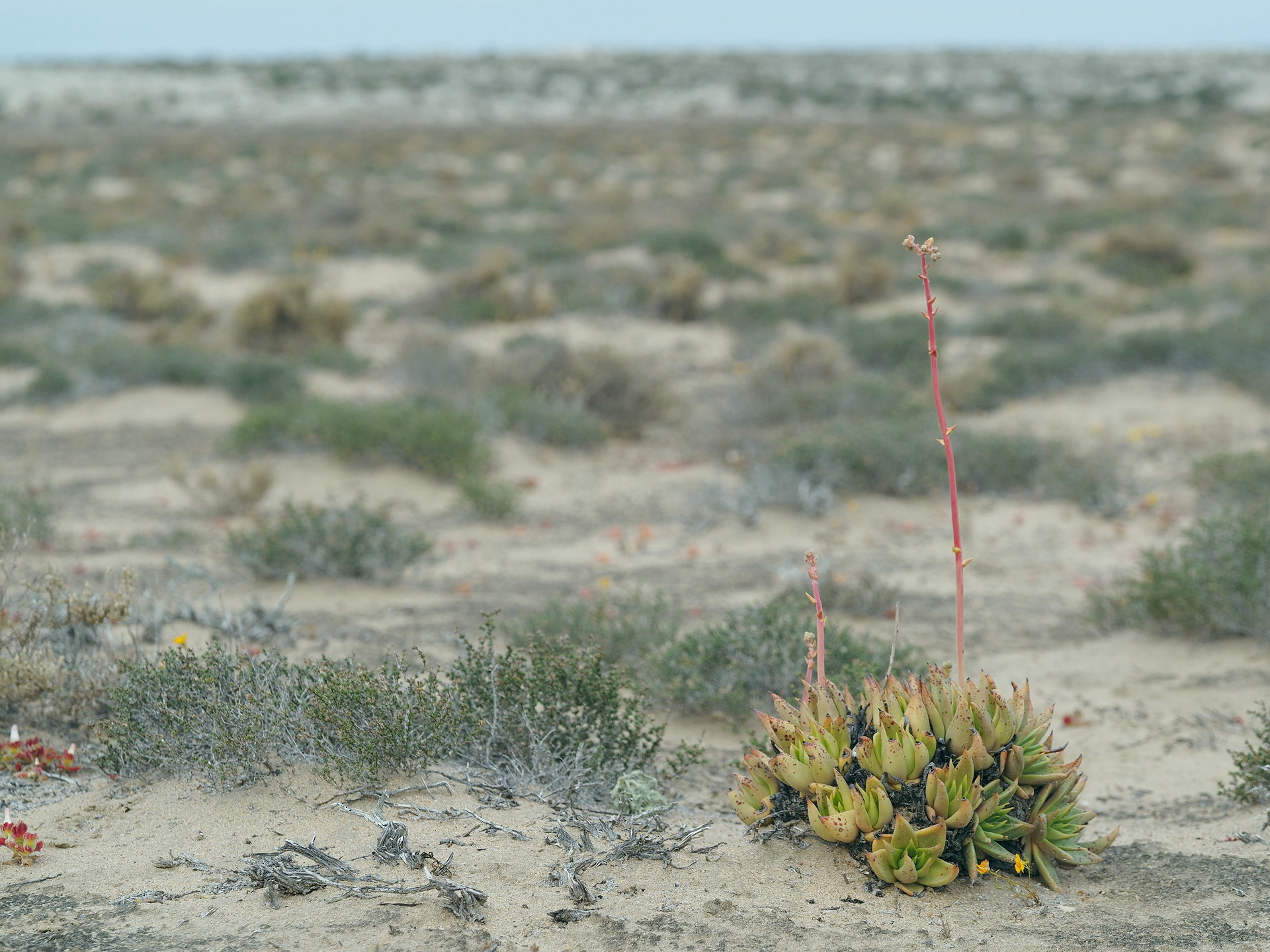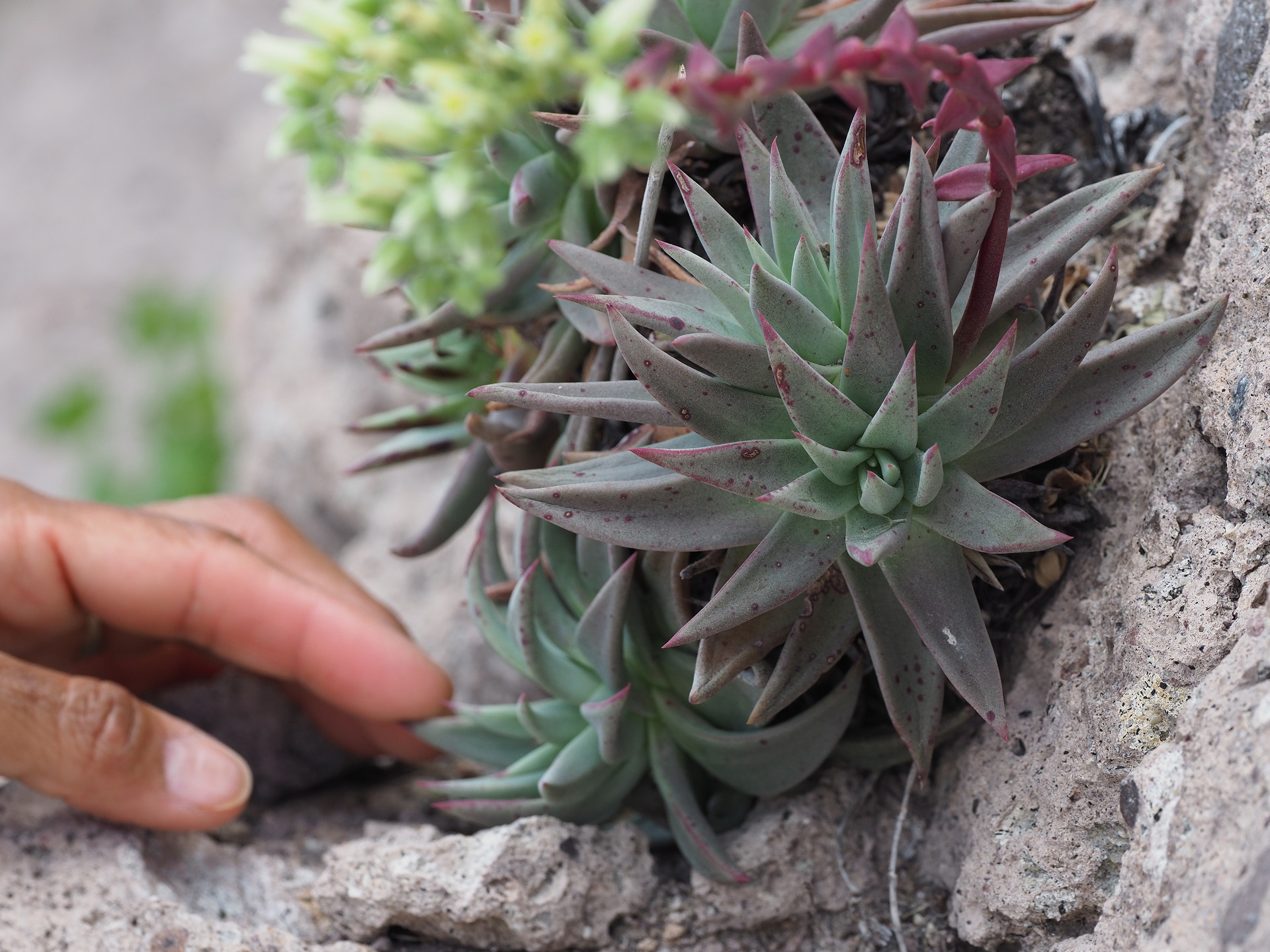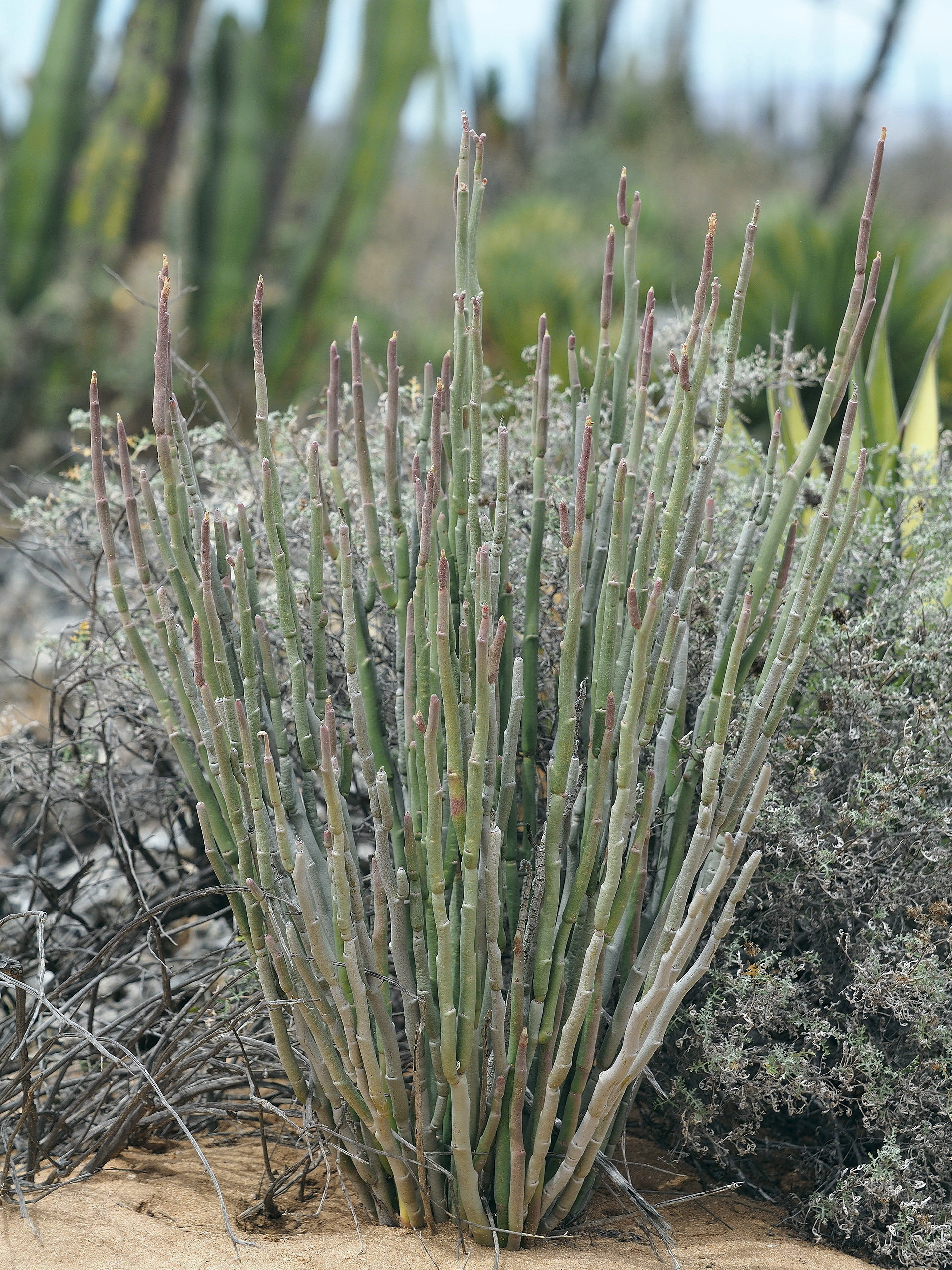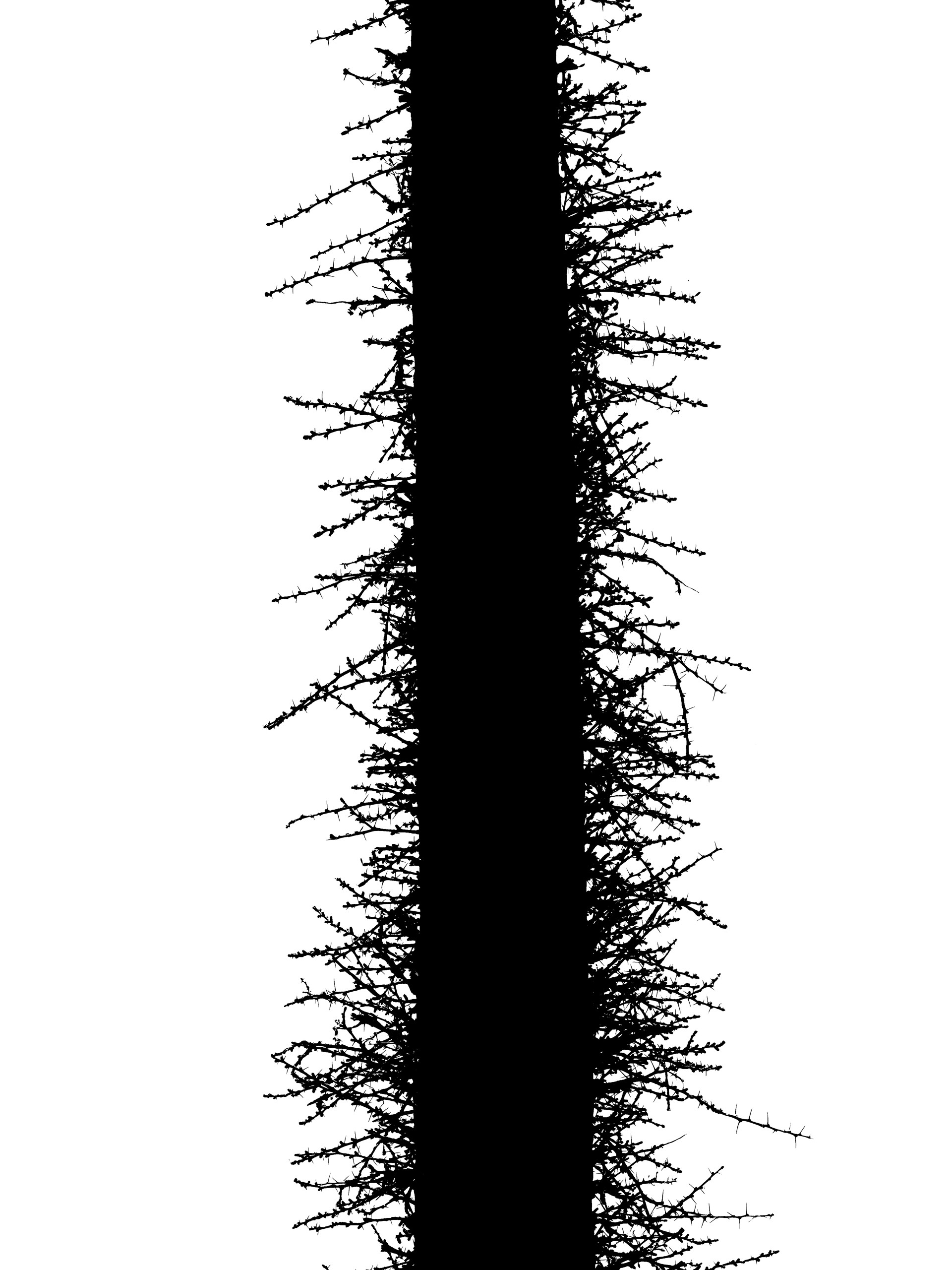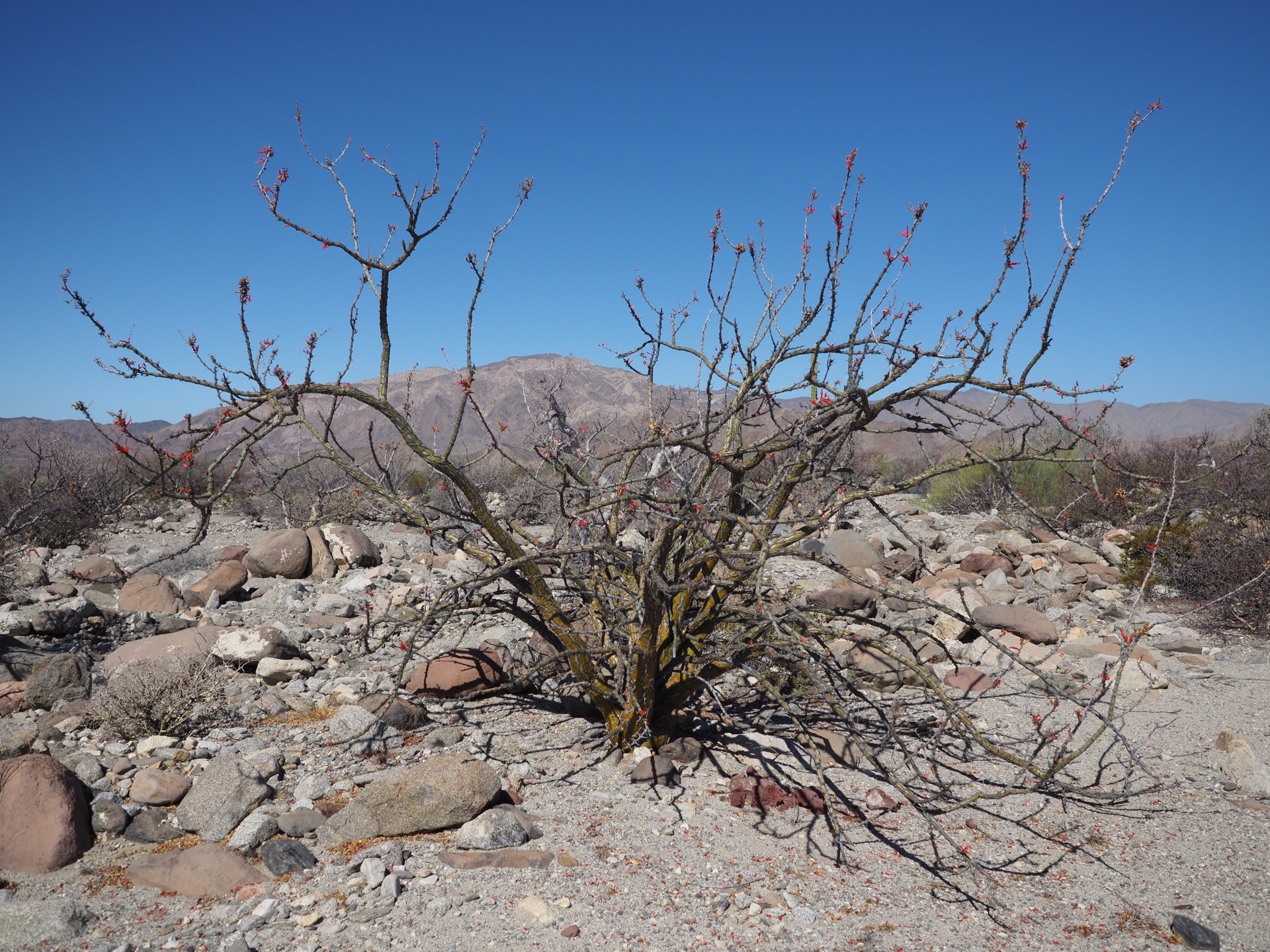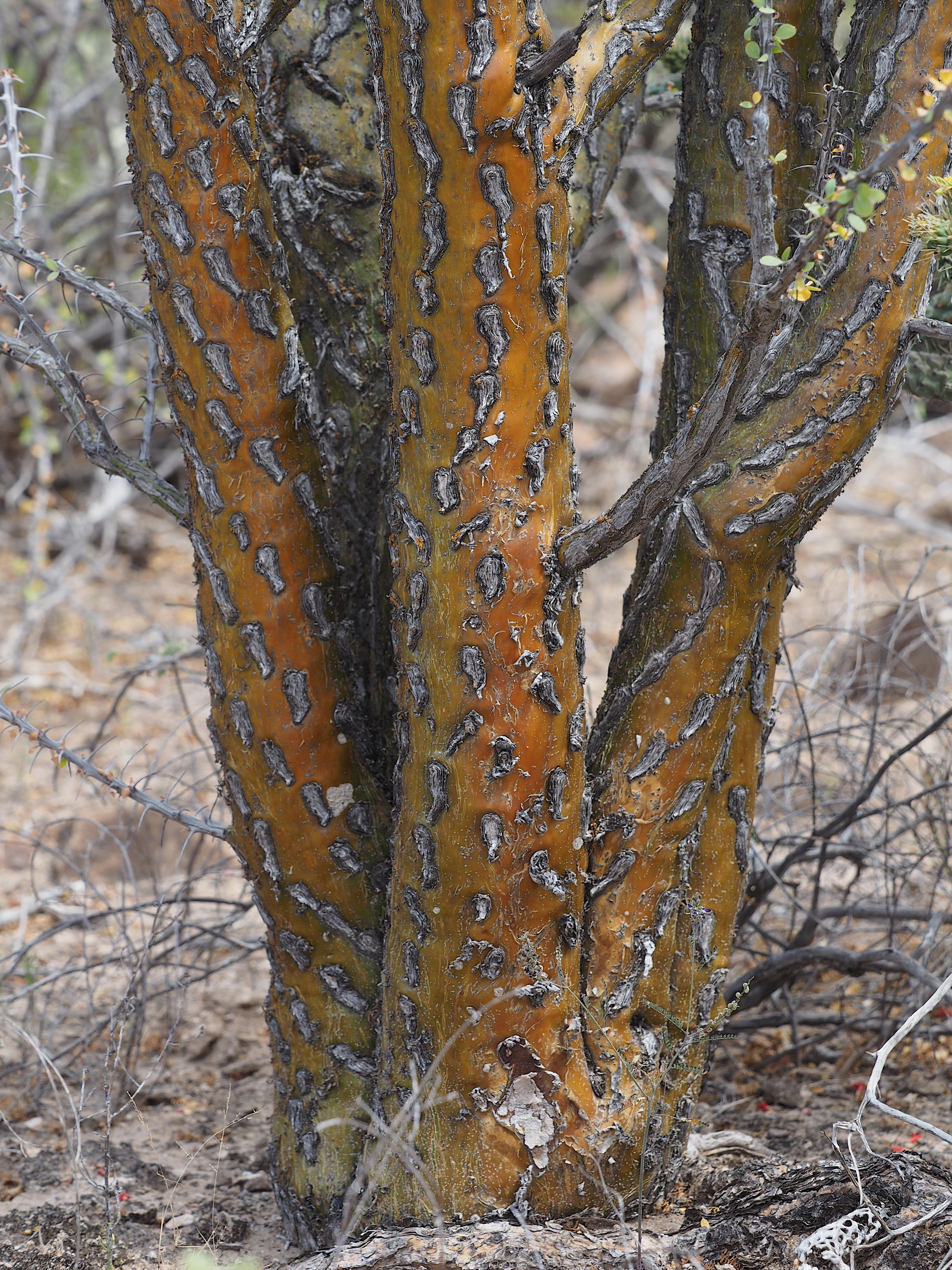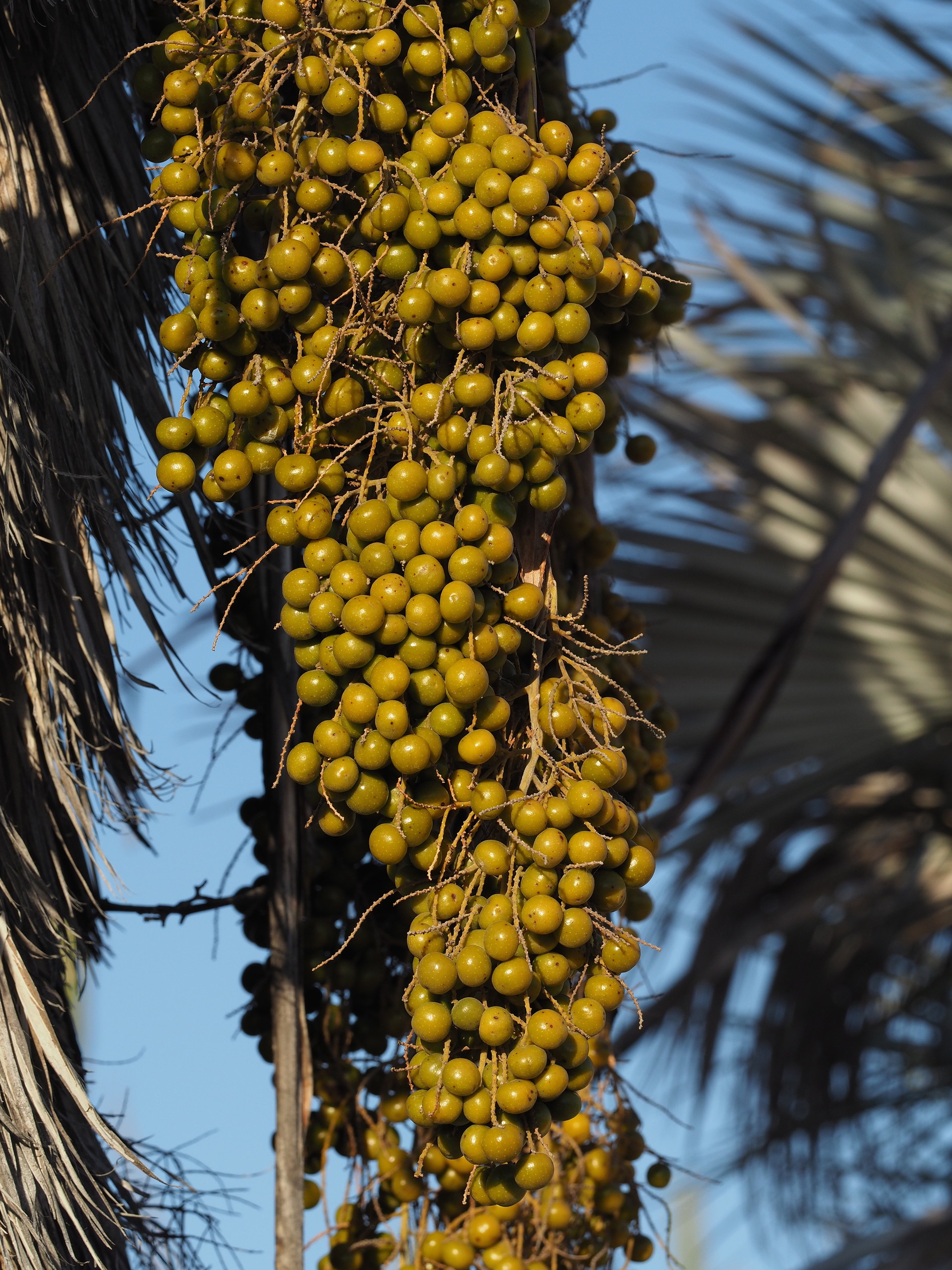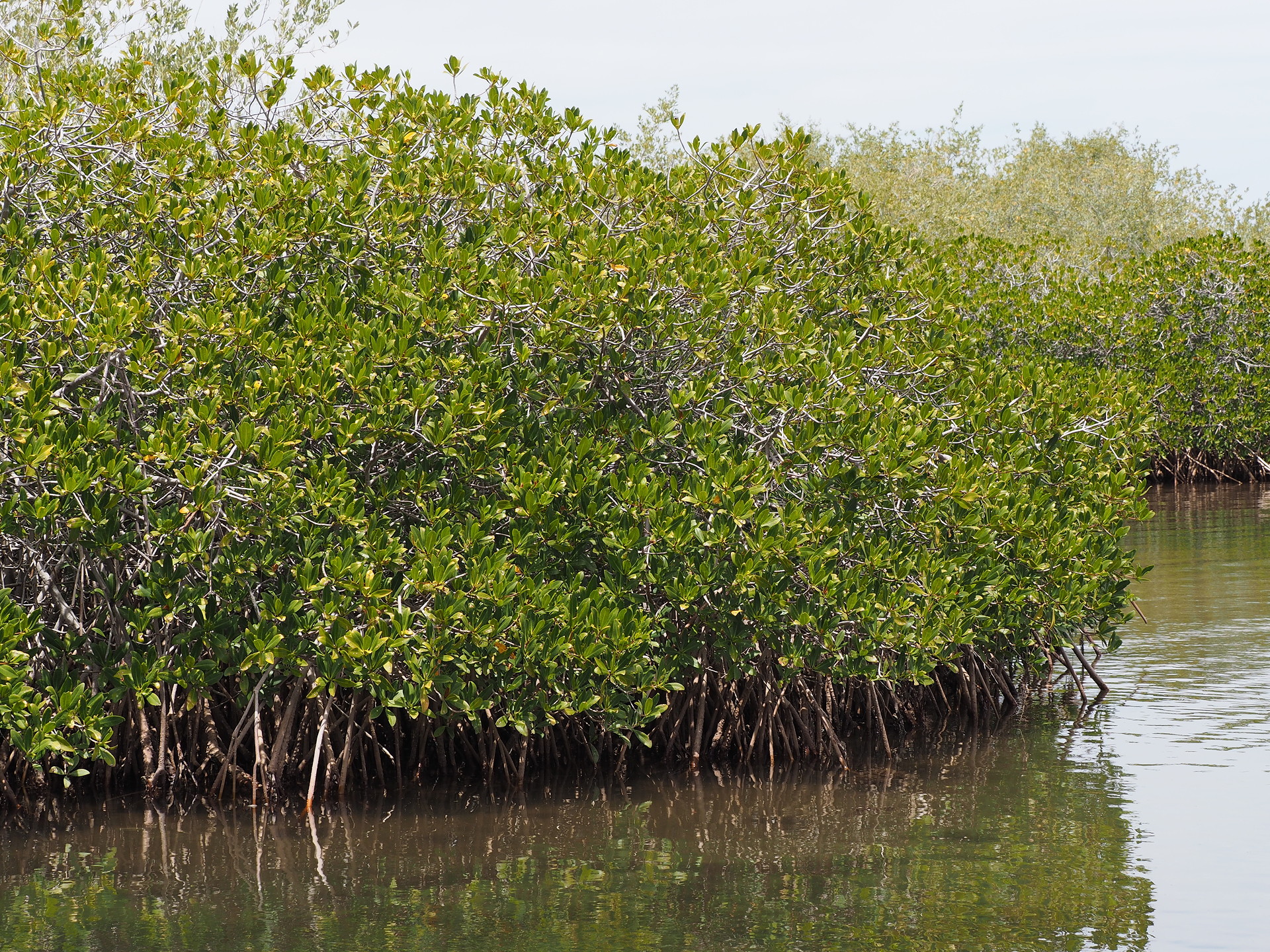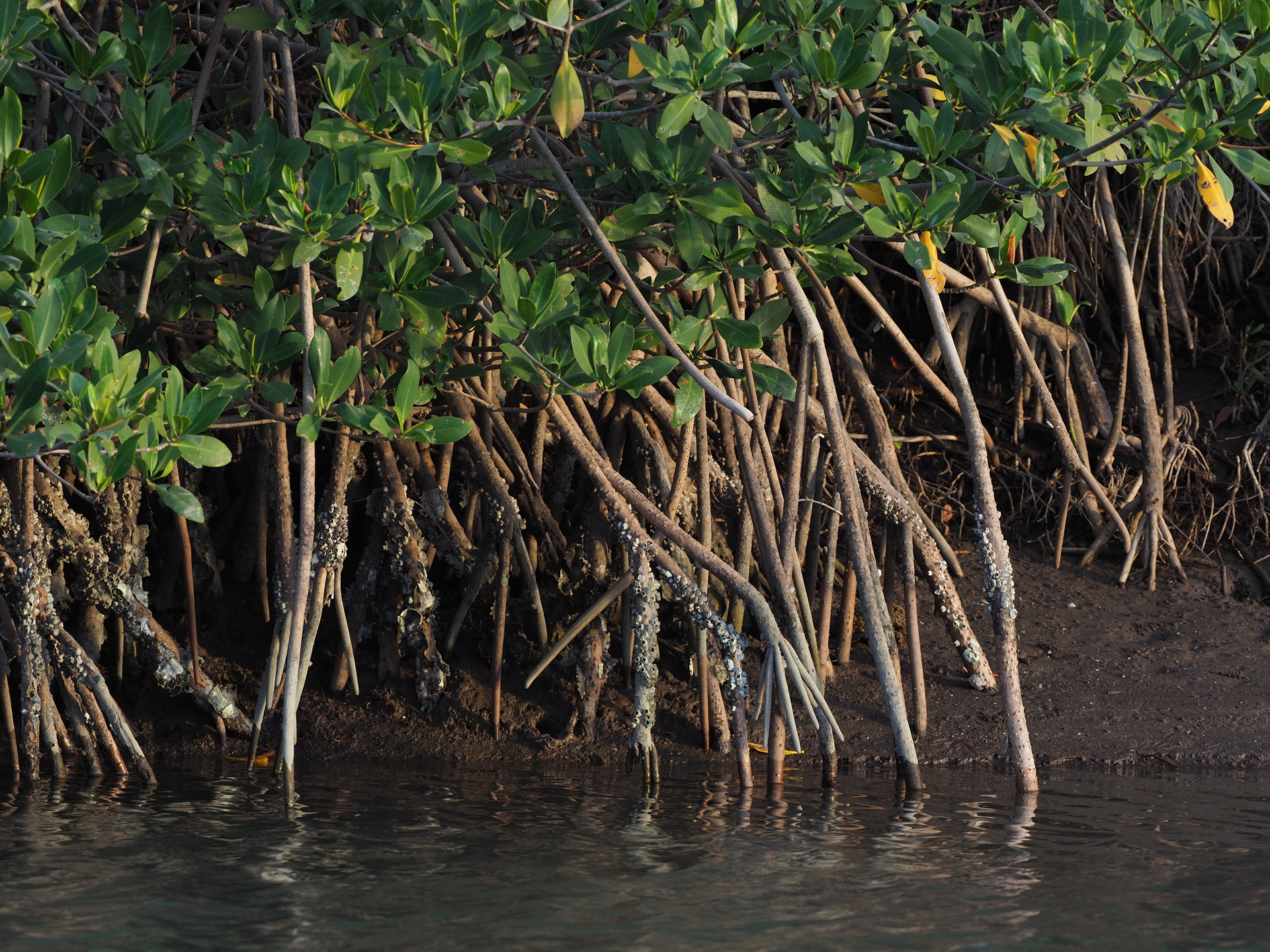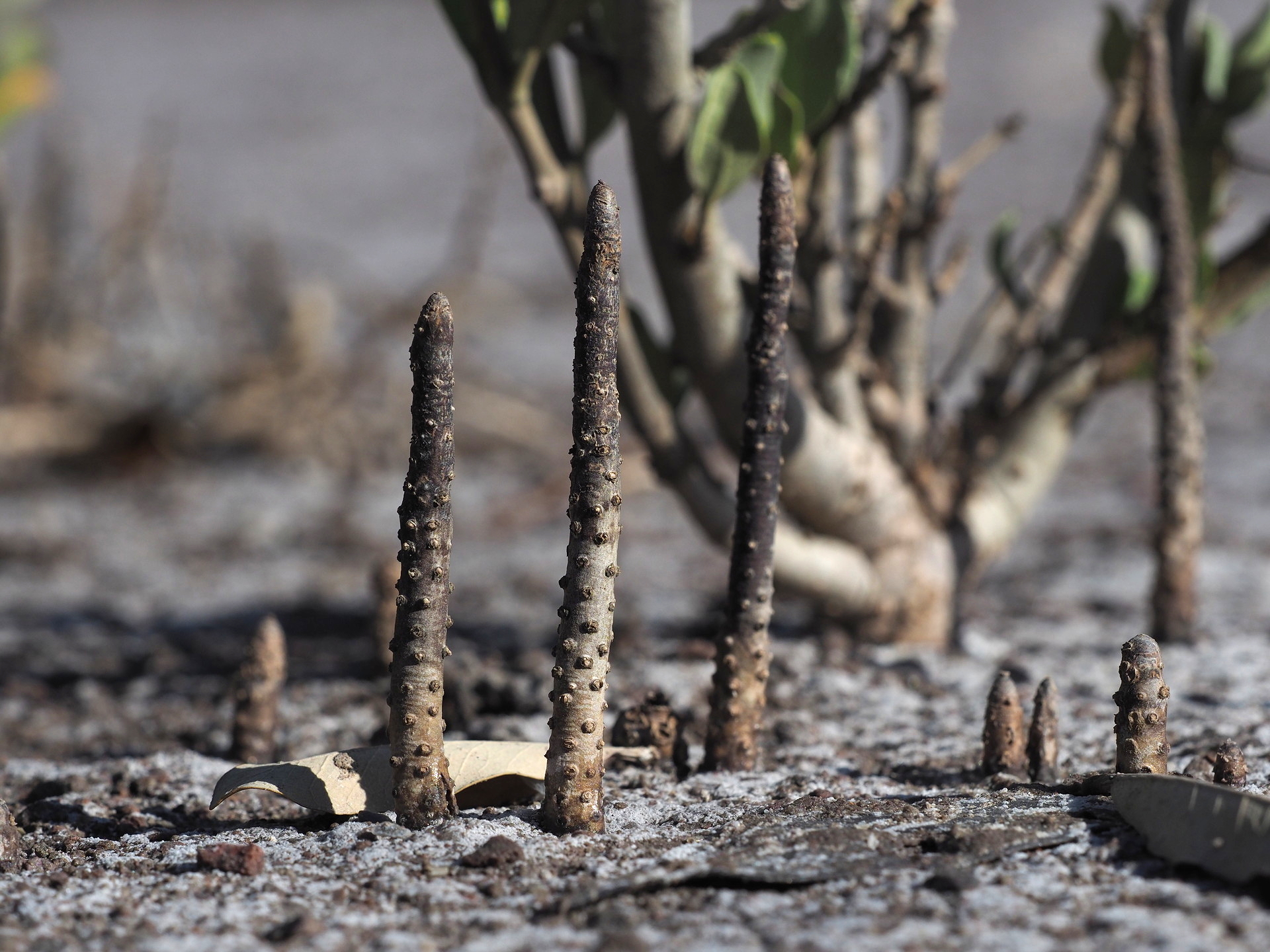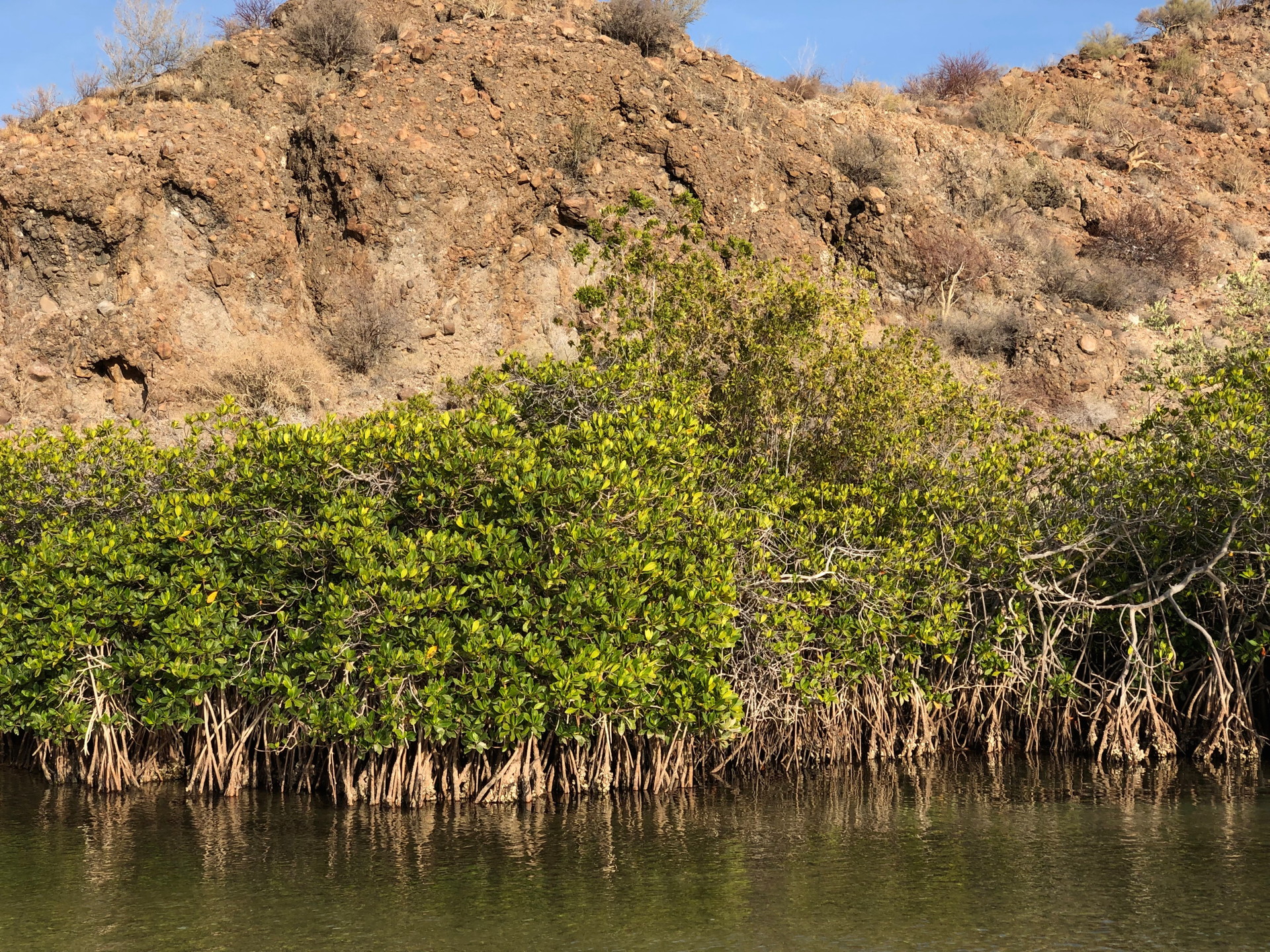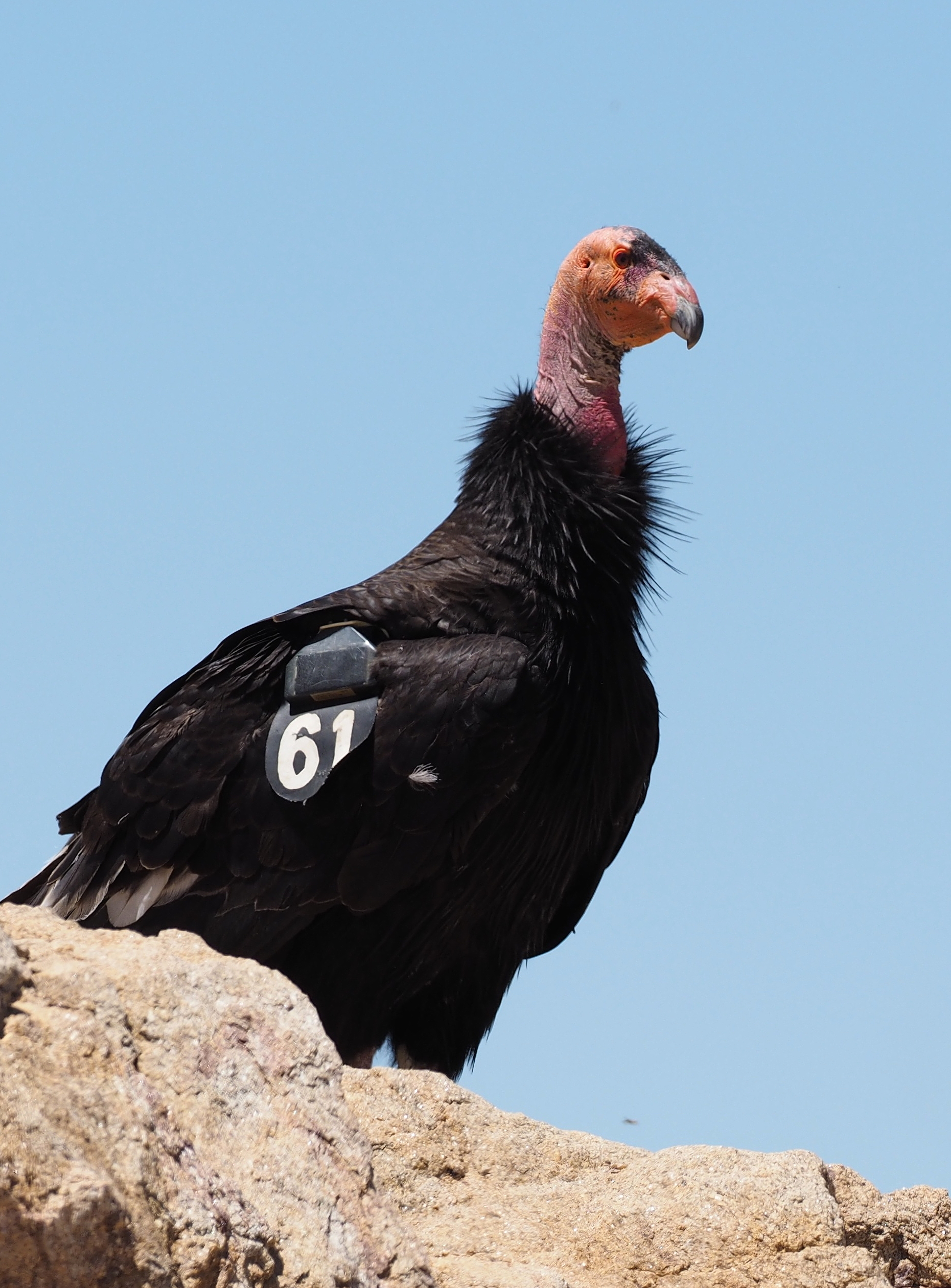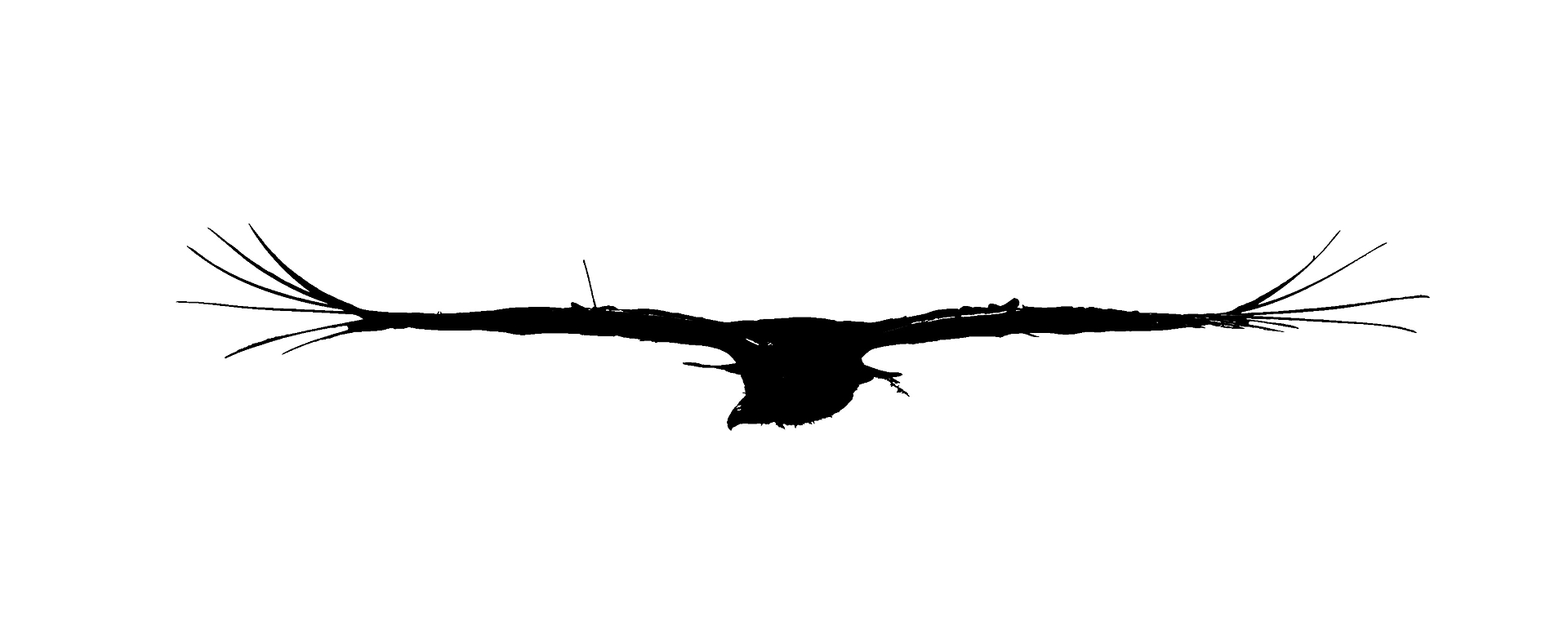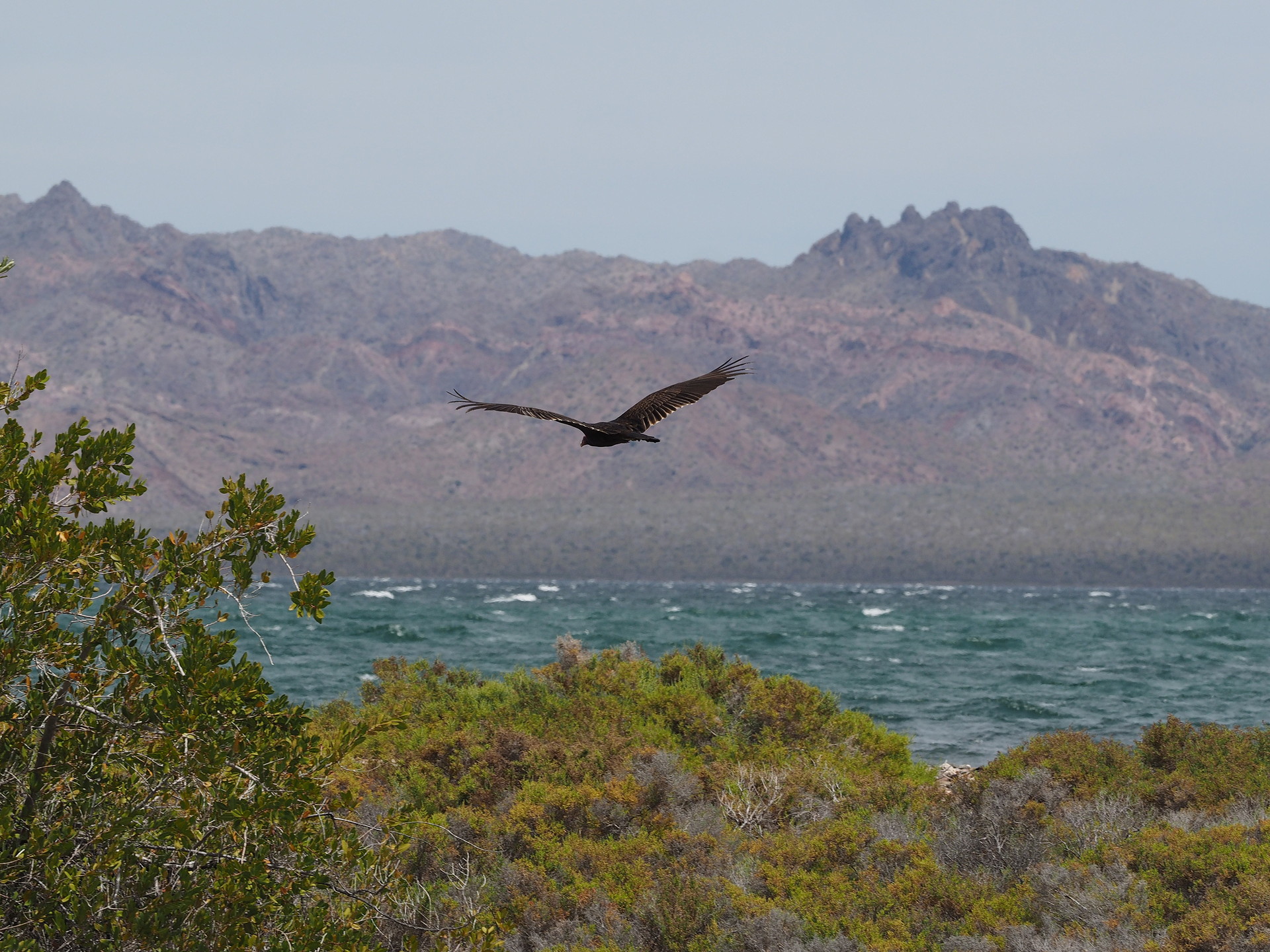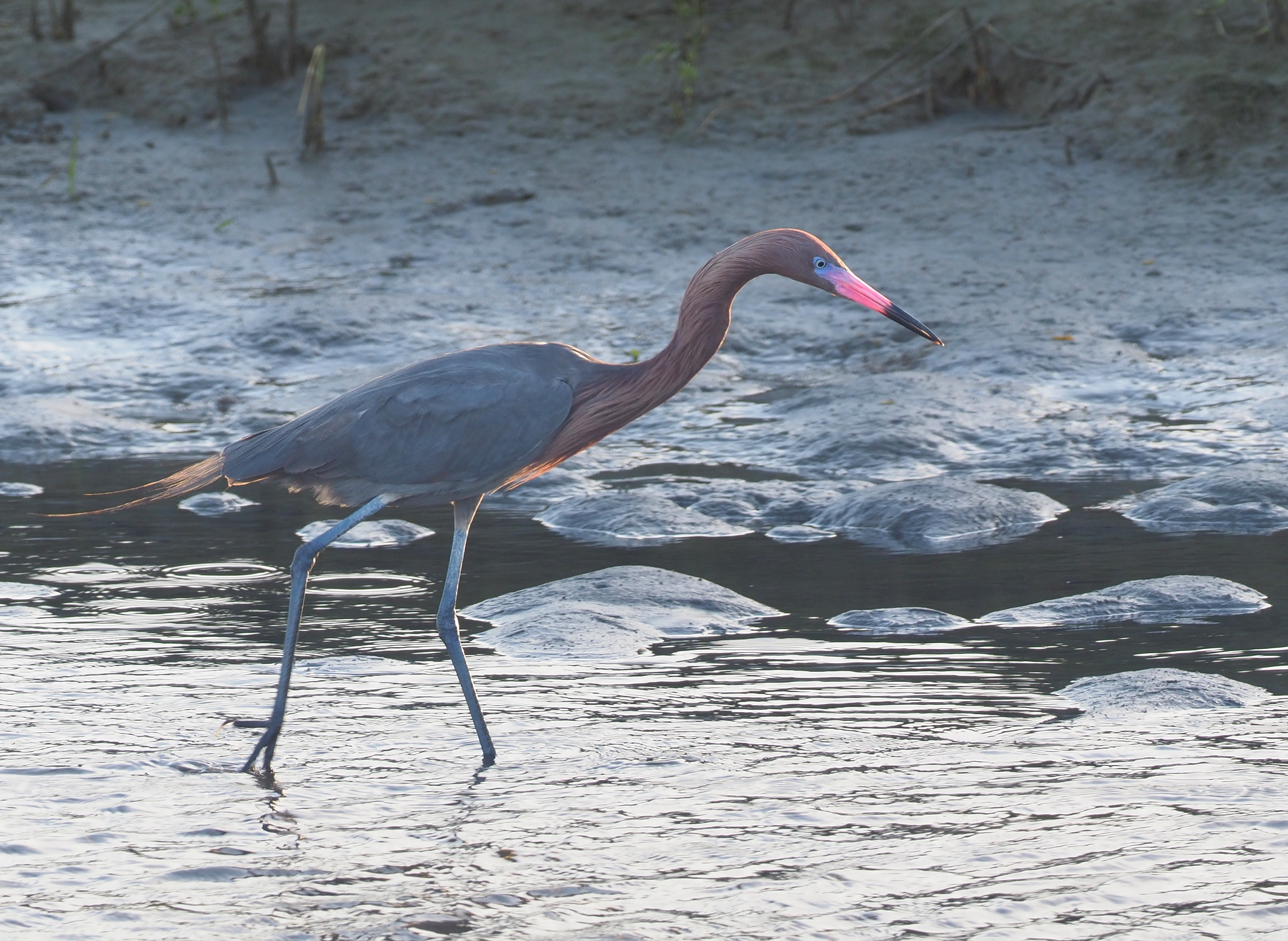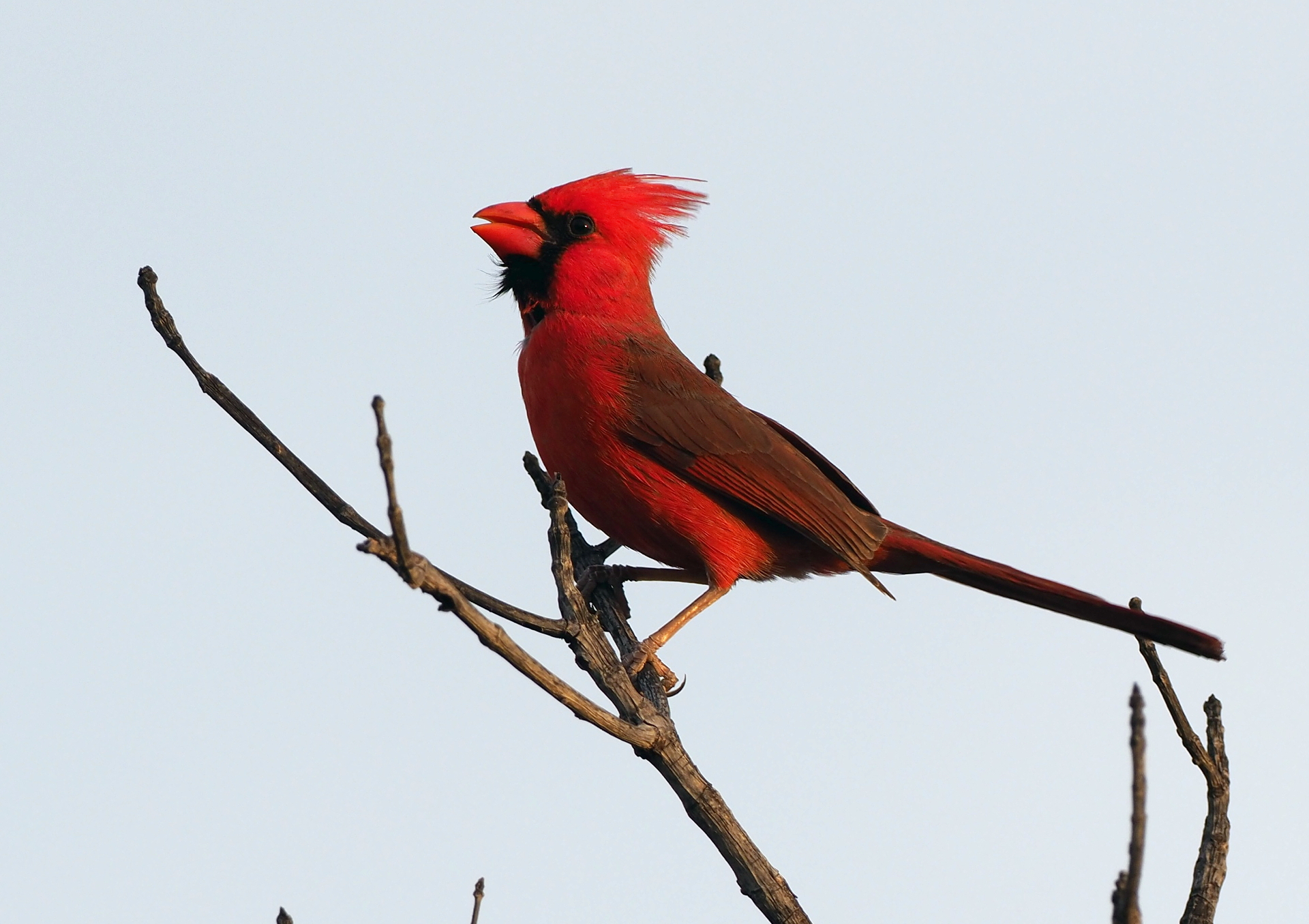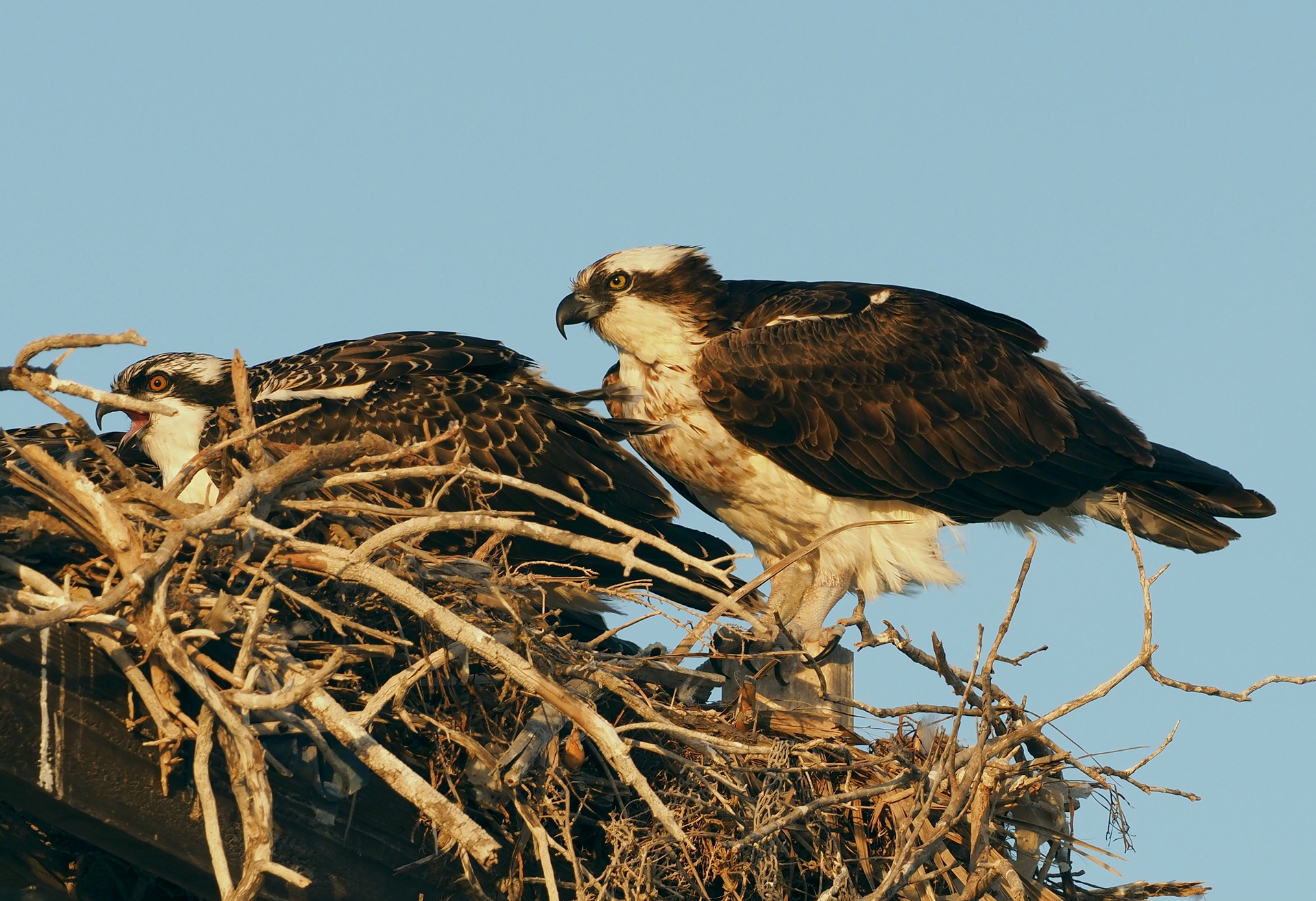Flora
Besides the 2012 guidebook by Rebman and Roberts about the Baja California flora there are many technical articles in journals about the flora of specific parts of the peninsula or about specific plant groups. For the Sonoran Desert plants, which includes much of Baja California, the easiest reference is by Turner et al and can be purchased here. To see actual distributions of particular plant species one can go to several online sources. Probably the most complete and easiest to use is iNaturalist. An example of distributions from iNaturalist is shown below. One species has a wide distribution, the other a small distribution. There are more observations than shown here; only the recent observations by iNaturalist contributors are shown here. Some museum specimens etc are not included. In addition, the positions of many observations in iNaturalist have been approximated – to avoid poaching of rare specimens. The accurate information exists – just not made easily available to the public. But the maps are valuable for helping to identify plants in the field – by eliminating ones unlikely to be where you are.


Noteworthy plant groups to pay attention to while traveling the peninsula include:
Succulents
Baja California is know for its xerophytic plants. Many of these are succulents while others are generally not considered succulents but are iconic features of the dry landscape. The major succulent plant groups include the cactus family (Cactaceae), the Crassulaceae (especially the genus Dudleya), and the Asparagaceae (Agaves and Yuccas). There are also some succulent Euphorbiaceae (especially Pedilanthus (now placed in the genus Euphorbia) and Jatropa) but much fewer than in Africa.
An interesting article about the diversity of succulent plants on the peninsula can be found here (for those with access to Bioone).
Non-succulent xerophytes that are obvious members of the landscape include various Elephant Trees (genus Bursera of the Burseraceae) and the Baja California Elephant Tree (Pachycormus discolor) of the Anacardiaceae. Perhaps the most iconic plant of the Baja California Central Desert is the Cirio or Boojum (Fouquieria columnaris) – looking like an inverted carrot. Three other Fouquieria species are dominant plants in much of the landscape.
Select Agaves, Yuccas and Dudleyas are shown below. See the figure captions for details.
In the southern part of the peninsula there are figs in moist areas (Ficus petiolaris), often growing out of rock cracks.
Ocotillos, Elephant Trees and a few other novel trees and shrubs are shown below. Be sure to read the captions. And, within each geographical subdivision of the peninsula are more images.
Palms
There are five widespread palm species found in Baja California (plus many more introduced around resorts). The term “widespread” is perhaps misleading – palms occur in many parts of the peninsula but only in certain moist environments along stream beds or moist canyons. Four of these are native, while the Date Palm (Phoenix dactylifera) is native to Africa and the Middle East but has been naturalized in certain moist areas around human habitation since the arrival of the Spaniards. This figure, taken from an article by Minnich et al, 2011 (probably not easily accessible to most people), mapped the distribution of these palms using the Google Earth imagery available by 2010.
Palm clusters are evident on such imagery at the highest resolution as shown here. (Download the kmz file for display on Google Earth). I identified some of the more obvious palm clusters (appear to be Brahea brandegeei from the map) in the central part of the peninsula to relate these to the climatology of summer cloudiness/rainfall here. Most of these dense palm groves are in isolated canyons far from paved roads and not easily accessed by normal tourists – even naturalists.
Mangroves
Mangroves are salt-tolerant trees or large shrubs that occur on weak wave-action coastlines throughout the tropics. They come from different plant families, but have certain salt management characteristics in common. In Baja California there are four common species (depending on how you define “mangrove”), the Red Mangrove (Rhizophora mangle), Black Mangrove (Avicennia germinans), White Mangrove (Laguncularia racemosa) and Buttonwood (Conocarpus erectus). These four species dominate any mangrove environment in the Americas, which is very poor in species compared with east Asia and the western Pacific. In Baja California by far the most common are Rhizophora and Avicennia.
Epiphytes
There is really only one vascular plant epiphyte (Tillandsia recurvata) found in Baja California, though there are many in the dry forests of mainland Mexico on the other side of the Gulf of California. There are many lichens covering shrubs, trees, and the ground in the fog zone of the Pacific side of the peninsula and these, along with T. recurvata provide good indicators of the fog-affected zones. A few of the lichens, identified (tentatively) from iNaturalist, are pictured in the figure below.
Fauna
The Baja California peninsula has a relatively poor fauna compared with “continental” locations on the other side of the Gulf of California. Yes, the Baja California peninsula is connected to the rest of North America, but the southern part of the peninsula in many ways is like an island when it comes to the fauna found there. Why? Because for vertebrate fauna that walk (mammals, reptiles and amphibians) the only way to easily get to southern Baja California is to come through the northern end of the peninsula. Such species must be hyperarid-adapted (a broad area gets only about 2 inches of rain per year) and somewhat cold-adapted. Thus, the Cape region, tropical in latitude and without freezing weather, does not have many of the vertebrate species found at the same latitude on the other side of the Gulf of California. The eastern side of the Gulf, including the states of Sonora and Sinaloa, has a richer reptile, amphibian, and even bird fauna. This is true even if you exclude the higher elevation portions of these two states. There is unrestricted migration of tropical species northwards along the lower elevation strips of these “continental” states of Mexico; many of these species have not been able to make the “jump” across the lower Gulf of California to the Baja California peninsula. Thus, the seasonal deciduous forest in the foothills of the Cape region near 23.5˚N will have fewer reptiles, amphibians and birds than a comparable forest in southern Sonora (27-28˚N), despite its more poleward location.
Despite the relative lack of vertebrates in Baja California compared with mainland Mexico, there are some endemics to the peninsula – though the casual visitor will not likely see them. Birds that are novel for a traveler coming from California might include Frigatebirds and Boobies along the shores of the Gulf of California, as well as some herons and other birds that are found in the southeastern US, but rare in the southwestern US.
A number of reptile species are restricted to Baja California, and in particular southern Baja. In fact, there is a section specific to Baja California endemics in the Peterson Field Guide to Western Reptiles and Amphibians. There are about 15 lizards and 5 snake species found in Baja California, but not in the US or on the mainland of Mexico. These include a colorful Rock Lizard (Pterosaurus thalassinus) and a Black Iguana (Ctenosaura hemilopha) restricted mostly to the Cape region. The Cape Region has the greatest number of endemic reptile species. However, unless you are specifically looking for these, you probably won’t casually encounter them.
Unlike walking vertebrates, birds have the advantage of flight and many can fly across the Gulf of California. Wading birds and shorebirds in Baja California are similar to those found in California or mainland Mexico. Desert birds are the same as southwestern US desert birds for the most part. And few of the tropical deciduous forest birds found in mainland Mexico are found in the Cape region of Baja California.
The Guerrero Negro saltworks and associated salt marshes with extensive tidal mudflats are a great place to look for shorebirds and some wading birds, and to see Osprey’s and their nests. A useful article on this area is here.
Some of the birds photographed during our April 2019 trip through Baja California are shown below – to show what a casual visitor might expect. We saw more species, but none that could not have been seen in the US during the proper time of the year. Of course, one bird will stand out – the California Condor. There is a breeding colony now established in the high Sierra San Pedro Martir (near the astronomical observatories) and this might be a convenient place to see these birds. We were fortunate to have very close views of one bird.
Underwater fauna: We don’t discuss anything here about the marine life around Baja California except to say that corals are not easily accessible in Baja California and only are found at the extreme southern end. They are poorly developed compared with the warmer waters of the Caribbean Sea region. Of course, there are many fish and invertebrates. Download the pdf of a now old book by Richard Brusca at the Arizona Sonora Desert Museum on the Intertidal Invertebrates (I have the 1977 book). And large marine mammals like whales. But we don’t discuss any of that here.

